- My Dashboard
- My Inventory
- My Searches
- My Garage (Open in a new window)
- My Vehicle Orders

- Shopping Tools
- ELECTRIFICATION
- FIND A DEALER
- SHOP ONLINE (Open in a new window)
- BUILD & PRICE
- Jeep ® Brand Community
- Concept Vehicles
- Collaborations
- Badge of Honor
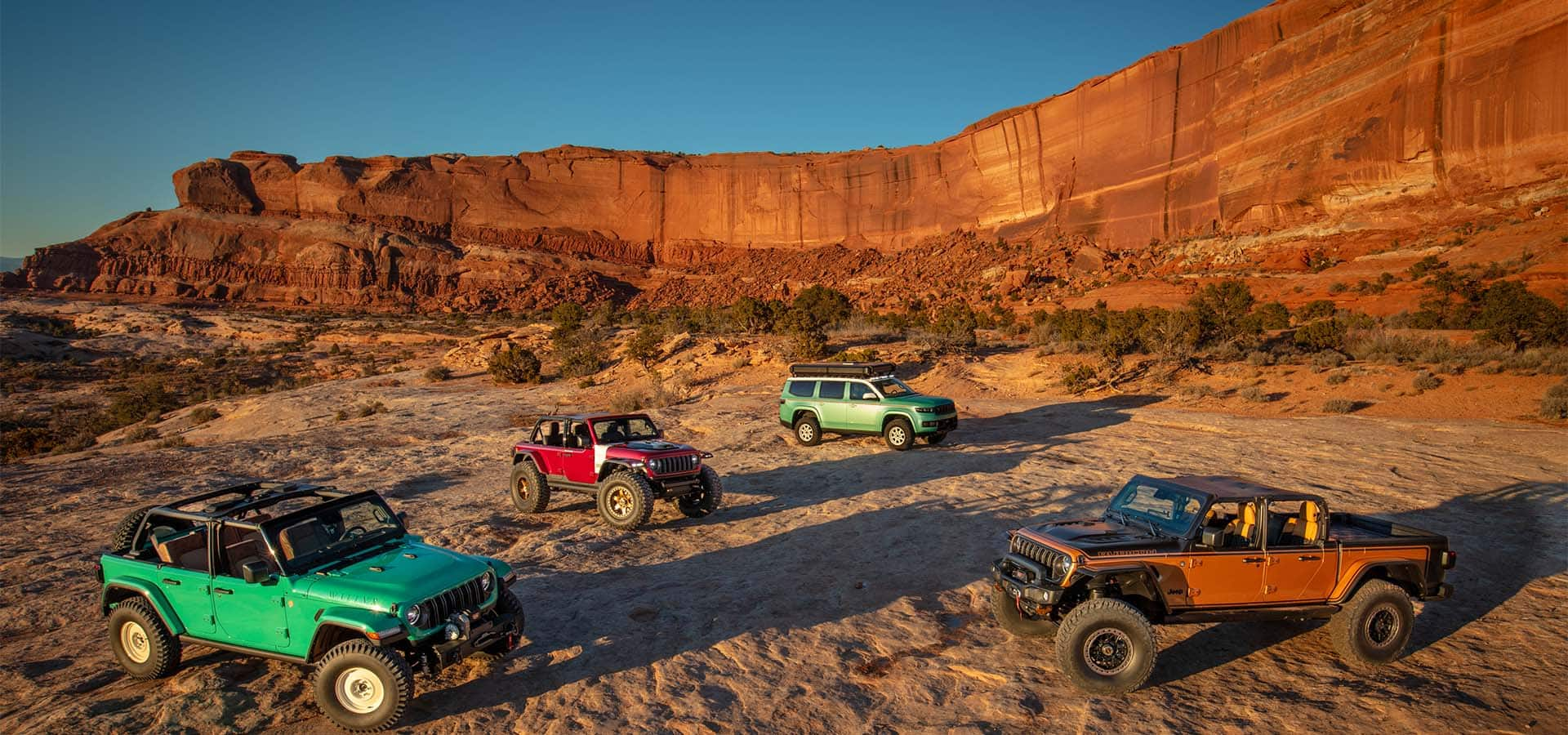

EASTER JEEP® SAFARI
Where concepts come to life.
Every year at Easter Jeep Safari®, off-road enthusiasts travel to Moab, Utah, the Jeep® Brand’s home away from home, to see dream vehicles become reality. Explore the Easter Jeep Safari 2024 lineup, featuring a collection of cutting-edge concept vehicles created by visionary designers and engineers. Concept vehicle and features shown throughout. Not available for purchase.
Join the Jeep® Brand community and start an adventure unlike any other.
EASTER JEEP® SAFARI 2024
Every year in Moab, Utah Jeep® Brand designers and engineers create big time buzz. The 2024 Easter Jeep Safari® did it again with a collection of imaginative concept vehicles that shatter the mold of what’s possible on- and off-road. Explore the newest additions to our yearly tradition. Concept vehicles shown throughout. Not available for purchase.
2024 JEEP® WILLYS DISPATCHER CONCEPT
2024 jeep® wrangler lowdown concept, 2024 jeep® gladiator rubicon high top concept, 2024 jeep® wagoneer vacationeer concept.
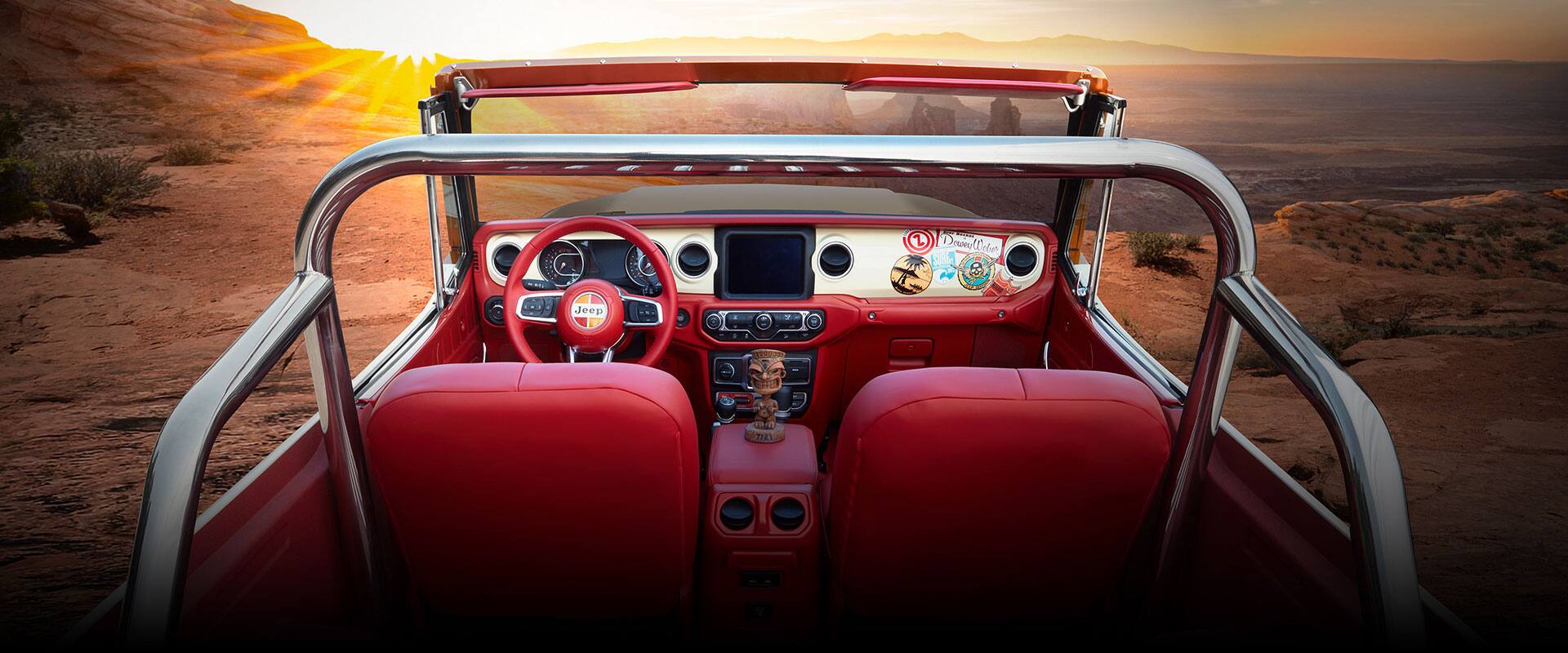
THE MOAB VAULT
Each year Easter Jeep Safari® delivers incredible concepts that leave a lasting impression. Explore some of our favorite concept vehicles from over the years and relive the excitement and daring vision the Jeep® Brand brings to Moab.
JEEP® WRANGLER MAGNETO 3.0 CONCEPT
Jeep ® scrambler 392 concept, 1978 jeep ® cherokee 4xe concept, jeep ® wrangler rubicon 4xe concept, grand wagoneer overland concept, jeep ® wrangler rubicon 4xe departure angle concept, jeep ® gladiator rubicon sideburn concept, jeep® gladiator d-coder concept, jeep® wrangler magneto 2.0 concept, jeep ® rubicon 20 th anniversary concept, jeep® performance parts/mopar® birdcage concept, jeep® ’41 concept, jeep ® bob concept, grand cherokee trailhawk® 4xe concept, the jeep® jeepster beach concept, jeep ® magneto concept, jeep® gladiator m-715 five quarter concept, jeep ® jt scrambler concept, the jeep® nacho concept, jeep ® 4speed concept, wagoneer roadtrip concept, the jeep® quicksand concept, jeep® luminator concept, jeep® trailpass concept, jeep ® crew chief 715 concept.
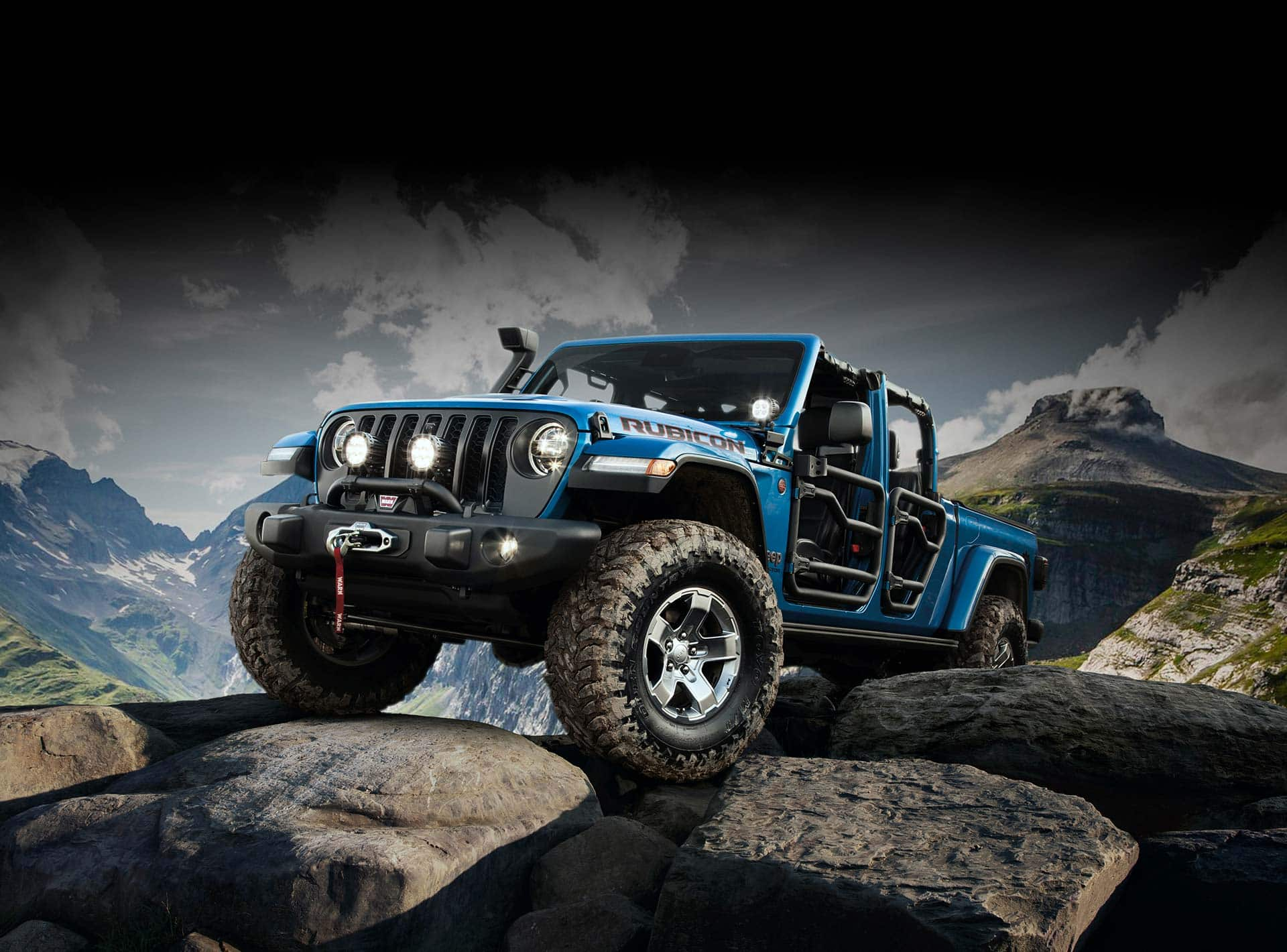
From lift kits and storage systems to decals and emblems, available Jeep® Performance Parts can help take your Jeep Brand vehicle to new heights.
- Grand Wagoneer
- Grand Cherokee
- Grand Cherokee 4xe
- Wrangler 4xe
- All Vehicles
- View Incentives & Offers
- 4xe Hybrid Incentives
- National Incentives
- Calculate Payment
- Find Your Trade-In Value
- Get a Quote
- Apply for Credit (Open in a new window)
- Services Overview
- Financing (Open in a new window)
- Insurance (Open in a new window)
- Protection Plans (Open in a new window)
- Jeep Brand Owner's Site (Open in a new window)
- Authentic Mopar® Accessories (Open in a new window)
- Vehicle Care (Open in a new window)
- Charge - Home (Open in a new window)
- Charge - Go (Open in a new window)
- Connected Services (Open in a new window)
- Vehicle Order Tracking (Open in a new window)
- Mobility and Rental
- Jeep Brand Merchandise (Open in a new window)
- Build & Price
- Compare Models
- Get a Brochure
- Sign Up for Updates
- Competitive Compare
- Jeep ® Brand SUVs
- Jeep ® Tax Credit
- Search New Inventory
- Start Buying Process (Open in a new window)
- Find a Dealer
- Schedule a Test Drive
- Certified Pre-Owned Inventory
- Trail Rated ®
- 4x4 Systems
- Fuel Efficiency
- FAQ and Glossary
Electrification
- Jeep ® Brand Electrified
- Jeep ® Electric Technology
- Jeep ® Electric Range
- Jeep ® Electric Benefits
- Jeep ® Life Home
- Jeep ® Community
- Jeep ® Badge of Honor
- Jeep ® Brand History
- Jeep ® Collaborations
- Jeep ® Awards
PRIVACY CENTER
- Privacy Policy (Open in a new window)
- Manage Your Privacy Choices (Open in a new window)
- Data Privacy Framework Policy (Open in a new window)
- Cookie Settings
- Copyright (Open in a new window)
- Terms of Use (Open in a new window)
- Legal, Safety and Trademark Information
- Accessibility (Open in a new window)
Owners and More
- Owners Manuals and User Guides (Open in a new window)
- Jeep ® Wave Owner Benefits
- Recall Information (Open in a new window)
- EcoDiesel Settlement (Open in a new window)
- Jeep ® Gear (Open in a new window)
- Jeep ® Rewards Mastercard ® (Open in a new window)
- (Open in a new window)

Jeep's Easter Safari Builds Go All Retro For 2024
W ith the 58th annual Easter Jeep Safari well underway in Moab, Utah, Stellantis has pulled the cover off of four brand-new off-road concepts. The lineup includes two highly-modified Wranglers, a big-tired Gladiator pickup, and a seriously retro take on the Grand Wagoneer , all of which take a look back at some of the Jeep’s greatest work for inspiration. Here’s what you need to know about these factory-modified wheelers.
Wrangler Low Down Concept
Jeep has built more than 100 of these custom 4x4s since 2008, but only a select few have managed to stick in the minds of the Jeep faithful. The new Rubicon 392 -based Wrangler Low Down concept pays homage to one of the most famous Easter Jeep Safari builds, the Lower 40 concept from 2009. That early build featured a V-8 engine swap under the hood, and made use of gigantic 40-inch rubber despite a stock ride height. The new truck is a bit more extreme, trading that old-school 5.7-liter V-8 for the potent 6.4-liter engine provided by the Rubicon 392. The new build also retains the stock suspension package from the Rubicon 392 model, but swaps out the stock Dana 44 axle for more robust Dana 60s with 5.38 gears. Those beefier axles help support the truck’s massive 42-inch BFGoodrich Krawler mud-terrain tires, which come installed on a set of 20-inch beadlock wheels. The stock fenders have been replaced with a set of flared carbon units, which help give the truck a purposeful stance. A Poison Apple Red paint job and a red-tinted bikini top are a nice nod to the original concept as well.
Wrangler 4xe Willys Dispatcher Concept
The second Wrangler build looks even further back in brand history, paying respects to the early civilian model Jeep from the post-war era . Based on the 4xe hybrid model, this Willys Dispatcher Concept gets some old-school appearance tweaks, including custom steel bumpers at both ends. The hood also features stamped “Willys” branding, which it shares with the original seven-barred product. Upgraded Dana 50 axles with 4.70 gears help increase capability, as do the Super Traxion 36-inch tires. That rubber comes wrapped around retro-style steel wheels, which are finished in a cream hue. The SUV itself is finished in a bespoke shade of Element 115 Green paint, which is accented nicely by the blacked out windshield banner. The best looking part of this custom SUV is the interior, complete with distressed saddle leather and houndstooth inserts throughout. The headrests have been pulled from the seats to improve that retro appearance. It’s the sort of thing we’d love to see make its way to the production models, however unlikely. The throwback style Warn Winch is another nice touch and helps to round out the package.
Gladiator High Top Concept
The Gladiator High Top Concept is a bit less of an involved build, borrowing mostly from the Jeep Performance Parts catalog. Upgrades include items like an AccuAir air suspension system, which work with Dana 60 axles at both ends to support 4x4 endeavors. The suspension system is put to the ground via a gigantic set of 40-inch BFGoodrich All-Terrain T/A KO3s, which come wrapped around a set of 18-inch KMC Grenade Crawl beadlock wheels. A set of flat fender flares and AEV bumpers ensure that the large rubber is covered and ready for road-use, while giving the pickup some additional flair. Out back you’ll find a truck bed storage system by Decked, which brings a bit of overlanding capability to the build. A Warn Winch and some rock slider steps have also been added should any off-roading adventures take a turn for the worse.
Vacationeer Concept
Rounding out the 2024 Easter Jeep Safari lineup is the Grand Wagoneer-based Vacationeer Concept. The design is a clear nod to the original Wagoneer models, complete with the oh-so lovely wood grain graphics missing from the current production model. The woody look pairs very nicely with the Spearmint paint, which has slightly more white in the mix than the aforementioned Element 115 color. The wheel openings have also been massaged to make room for the larger 35-inch tires, which come wrapped around 18-inch Method Race wheels. A 1.5-inch suspension lift adds a bit of aggression to the stance, while bringing a bit more off-road capability to the table. The rear rows of seats have been removed in favor of a carbon-fiber RedTail Overland Skyloft, which serves as a passthrough rooftop tent for ideal camping conditions. Under the hood sits a high output variant of the Hurricane inline-six engine, which provides 510 hp and 500 lb-ft of torque. That said, the real highlight of this build is found on the interior, where Jeep enlisted the assistance of fashion designer Kiel James Patrick. The custom flannel seats feature famous Jeep models from years gone by, and fit with the theme perfectly. This is exactly how the Grand Wagoneer should have looked in production form, but we’ll settle for a concept like this one.
The Easter Jeep Safari runs through March 31st, 2024 in Moab, Utah. If you’re a diehard Jeeper, it might be worth the trek to lay eyes on these unique concept vehicles.
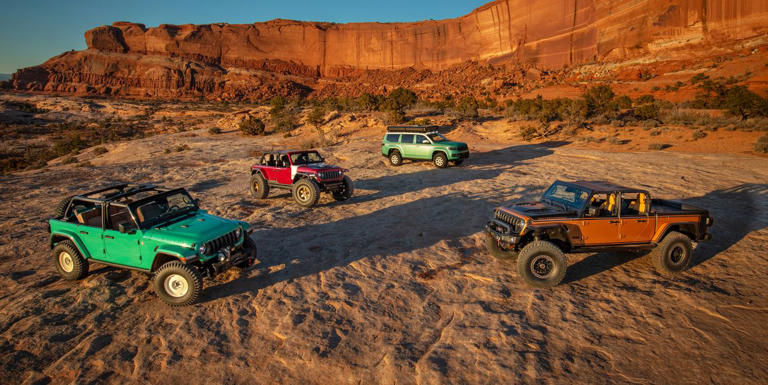
Jeep Easter Safari 2023 Preview: Modded Wranglers, Gladiators and Wagoneers Galore
We'll take one of each, please.

- Jeep unveils a slew of concepts and custom-made vehicles for this year's Easter Jeep Safari.
- The Wrangler, Grand Wagoneer, Gladiator and even a classic Cherokee are all represented.
- Marks the last year of the electric Magneto concept, as the production Recon EV is coming in 2024.
The snow is thawing, flowers are blooming, and there's romance in the air. That can mean only one thing — it's Easter Jeep Safari season! For one week each spring, off-road enthusiasts migrate to Moab, Utah, to drive their four-wheelers in the punishing desert clime. Even Jeep gets involved, bringing a handful of unique custom vehicles to the party to show off what their platforms are capable of, and what can be built with the vast Jeep parts catalog.
Here are all the vehicles the automaker is bringing to Easter Jeep Safari 2023:
Am I Ready for an EV?
- EV ownership works best if you can charge (240V) at home or at work This typically means a 240V home installation, but you could also have a similar setup at your office or other places your car is already parked for several hours each day. Don't expect a regular household outlet (120V) to suffice unless you've got a plug-in hybrid, in which case overnight charging at home is feasible.
- If you can’t charge at home, charging at a charging station could take at least 10x longer than at a gas station With public charging infrastructure still in its infancy, the user experience can be maddeningly inconsistent. Tesla owners tend to rave about the reliability and speed of the company's proprietary Supercharger stations, but rival DC fast options have thus far been plagued by technical issues and overcrowding. It's an evolving landscape and our best advice is to do your research on the available options for the EV you want to buy.
- Adding a 240V home charging system could cost up to $1,600 or more If your existing electrical service can handle the additional demands of EV charging, you may be able to add Level 2 charging at home for less than a grand, including installation. But your costs will multiply if you need to upgrade your electrical panel or add a dedicated circuit.
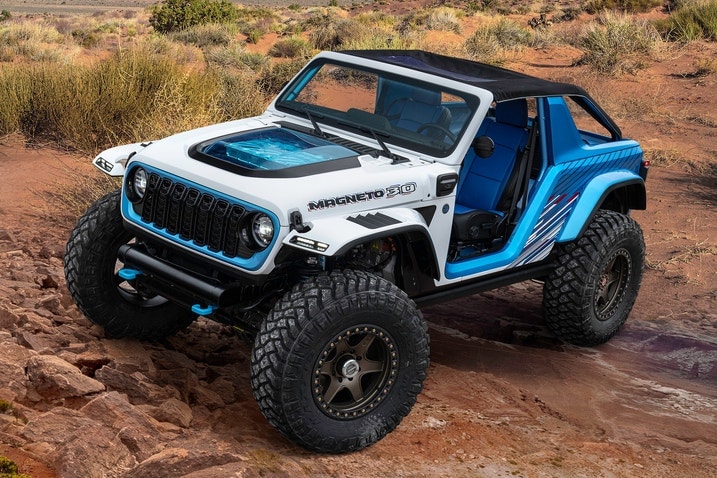
Magneto 3.0
Easter Jeep Safari 2023 marks the end of the Magneto line — the two-door electric Wrangler concept — since the Wrangler-like Recon EV is due next year. Jeep is sending this third-generation concept out with a number of upgrades that hopefully make their way to the Recon. Additions for 2023 are highlighted by the new dual driving modes. The more pedestrian mode limits output to 285 horsepower and 273 lb-ft of torque, which is roughly the same as the standard Wrangler with the gasoline V6. The other mode, which we might as well call "Unwrangled," boosts this to 650 hp and 900 lb-ft (an increase of 25 hp and 50 lb-ft compared to Magneto 2.0 ).
Other tweaks include door openings cut back 6 inches to help you get in and out, a steeper rake for the windshield, and custom anti-roll bars. The Bright White/Surf Blue exterior paint scheme has a new design and now features red accents for a sporty feel.
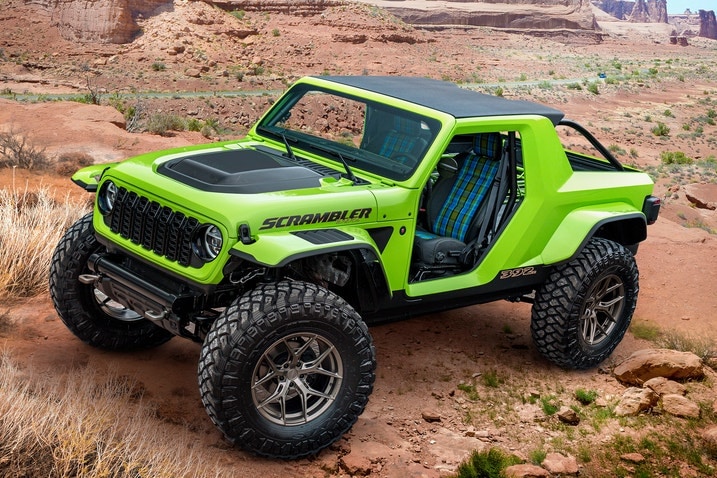
Scrambler 392
The Scrambler 392 looks similar to the Magento 3.0 — both are open-door takes on the Wrangler and the passenger areas end behind the front seats — though the Scrambler is based on a four-door model so its bed is a bit larger. More importantly, as the name suggests, the Scrambler is powered by the mighty 392-cubic-inch (or 6.4-liter) V8 available on the Wrangler Rubicon. Carbon-fiber body panels are employed to lower weight, while an air suspension gives a maximum 5.5-inch lift. The exterior is finished in Sublime Green, and the cabin features plaid blue cloth inserts with green accents.
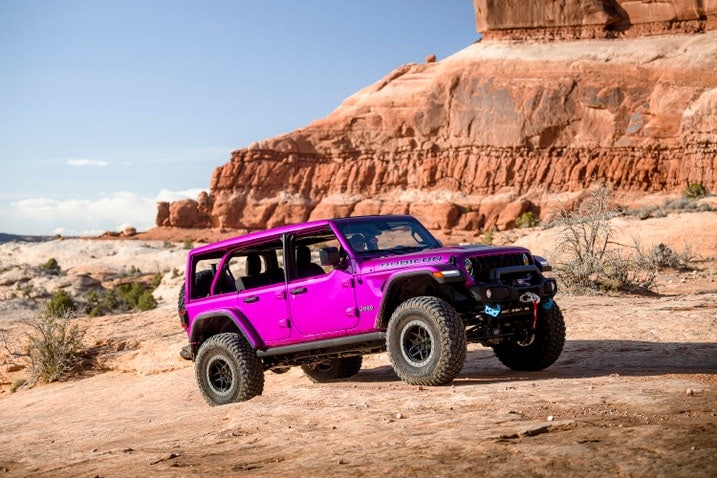
Wrangler Rubicon 4xe
The third of Jeep's custom Wranglers doesn't have a fancy name, and neither does the deep magenta paint that is this vehicle's signature. It's a nod to the Tuscadero (pink) color that was available a couple years ago, but this has more of a purple hue. This concept features half-doors, 17-inch AEV beadlock wheels with 37-inch BFG mud-terrain tires, a Warn winch and an air suspension with a maximum lift of 5.5 inches. Plus, the 4xe (plug-in hybrid) powertrain means you also get cool blue accents on the outside.
Wrangler 4xe Departure
While much of what you see on the Wrangle 4xe Departure is custom-made, a number of its add-ons are actually available through the Mopar parts catalog. These include the tube doors, a 2-inch lift kit, Warn winch, rock rails and all-weather cargo mats. From there, the design team engineered a custom grille guard that folds down to create a makeshift bench, a spare tire holder that can rotate to store the tire on the outside or inside, and brackets to hold the trio of 11-inch Tyri lights up top. The vehicle is finished in Dark Harbor blue on top of a two-tone brown interior.
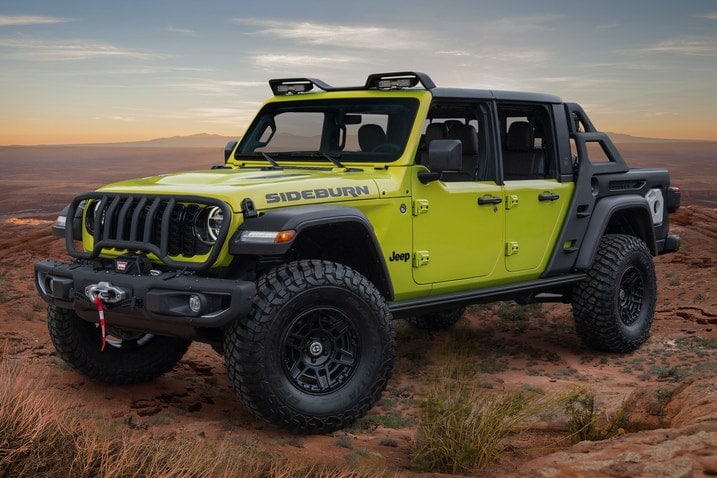
Gladiator Sideburn
Perhaps as a nod to mulleted action stars of the 1970s, the Gladiator Sideburn is actually a party up front and in the back. This Gladiator is painted Solar Flash Yellow and shares quite a few Mopar bits with the Departure, above. It starts to get really interesting once you move aft of the rear doors. The bed frame and sport bar directly behind the doors are made of steel and carbon fiber, and feature a two-tier storage system and Molle panels for attaching pretty much anything you can imagine.
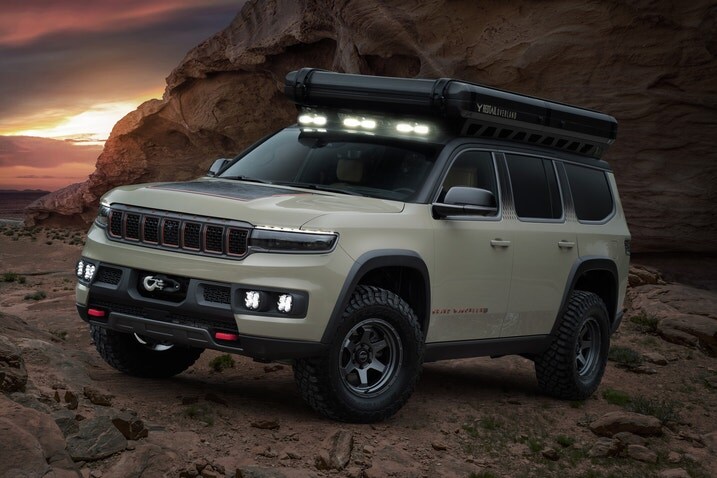
Grand Wagoneer Overland
Overlanding is Hansel-levels of so hot right now, and it's only natural that Jeep jumps in with its own Grand Wagoneer Overland. Based on the short-wheelbase version of the luxe Grand Wagoneer, its centerpiece is the RedTail Overland Skyloft rooftop camper — a hard-sided camper with solar panels, heating and power, double-paned windows and more. But the Grand Wagoneer is extensively modified, too. The second- and third-row seats are removed, as is the rear panel of the panoramic sunroof. It's replaced by a trapdoor for easy Skyloft access. The muddy Industrial Green paint job is complemented with laser exterior lighting and custom wheel arches and front bumper.
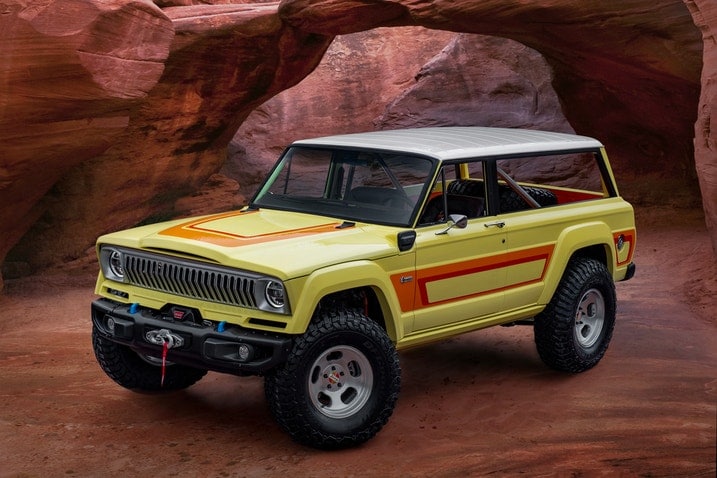
1978 Cherokee 4xe
This concept vehicle started its life as a 1978 Jeep Cherokee SJ plucked from the depths of an internet marketplace. Next, it was matched with a Wrangler Rubicon 4xe chassis and drivetrain and then painted with period graphics. At a glance, only the signature blue 4xe tow hooks give away this restomod. Inside there are low-back bucket seats (sans head restraints), a four-point roll cage and a platform on which a spare tire sits.
Edmunds says
Jeep's EJS vehicles never fail to surprise and impress, but pour one out for the end-of-line Magneto. Hopefully we'll see an extreme Recon EV at next year's Easter Jeep Safari.

Cameron Rogers has worked in the automotive industry since 2013. He has tested and reviewed hundreds of vehicles over the course of his career. Today, he leads the news team in developing cutting-edge news articles, opinion pieces and sneak peeks at upcoming vehicles. Favorite cars that he's driven during his tenure at Edmunds include the 991-era Porsche 911 Turbo S, Rolls-Royce Ghost and several generations of Honda Odyssey (really).
Is an EV right for me?
Related information, other models.
- Used Land-Rover Range-Rover-Sport in Webster, MA
- Used Kia Sportage-Plug-In-Hybrid in Phillipsburg, NJ
- Used Toyota Yaris-Hatchback in Mequon, WI
- Used Subaru WRX in Ardmore, OK
- Used Pontiac G5 in Franklin, TN
- Used GMC Envoy-Xuv in Anderson, IN
- Used Jeep Cherokee in New Brunswick, NJ
- Used Buick Rendezvous in Westfield, MA
- New Porsche Cayenne for Sale in Gibsonia, PA
- Used Hyundai Elantra-Hybrid in Apopka, FL
Recent automotive news
- Cadillac Sollei Concept Is Sunny Yellow Perfection
- Nissan to Discontinue Versa After 2025, Altima Could Disappear a Year Later
- 2025 Honda Odyssey: Updated, But Still No Hybrid
- Edmunds U-Drags: Race to There and Back
- I Went 205 MPH in the New Chevy Corvette ZR1
- 2025 Mercedes-AMG GT Pro Debuts with Impressive Engineering
- CarCast+Edmunds Podcast: Driving the New Audi RS 6 Avant GT
- 2025 Mercedes-AMG GT 63 S E Performance First Drive: I Can't Drive 55
- 2026 Audi A5 First Look: The Audi A4 No More
- Porsche Macan EV Adds New Trim Levels
Popular new car reviews and ratings
- Ford Ranger Raptor
- Lexus GX Car
- 2025 Ford Mustang News
- Mazda CX 50
- 2025 Toyota Corolla Cross News
- Honda Ridgeline Pickup
- Chevrolet Camaro Car
- Lexus Is 350 Sport
- 2024 Ford Escape
Lease deals by make
- Honda Lease Deals
- Toyota Lease Deals
- Audi Lease Deals
- Nissan Lease Deals
- Lexus Lease Deals
- Mazda Lease Deals
- Genesis Lease Deals
- Land Rover Lease Deals
- Ram Lease Deals
- Volkswagen Lease Deals
Lease deals by model
- Mercedes Benz G Class Lease Deals
- Kia Telluride Lease Deals
- Audi Q7 Lease Deals
- Porsche Macan Lease Deals
- Ford Escape Lease Deals
- Toyota Rav4 Lease Deals
- Chevrolet Silverado Lease Deals
- Chevrolet Camaro Lease Deals
- Ford Explorer Lease Deals
- Toyota 4Runner Lease Deals
Join Edmunds
Receive pricing updates, shopping tips & more!
672 Wine Club
- Motorcycles
- Car of the Month
- Destinations
- Men’s Fashion
- Watch Collector
- Art & Collectibles
- Vacation Homes
- Celebrity Homes
- New Construction
- Home Design
- Electronics
- Fine Dining
- Benchmark Wines
- Brian Fox Art
- Disneyland Resort
- Ka La’I Wakiki Beach
- Kalamazoo Grill
- Raffles Hotels & Resorts
- Sports & Leisure
- Health & Wellness
- Best of the Best
- The Ultimate Gift Guide
Jeep Just Unveiled an All-Electric Wrangler and a Retro Cherokee Restomod
The pair of concepts will star at the carmaker's annual easter safari event from saturday, april 1, to sunday, april 9..
Senior Staff Writer
Bryan Hood's Most Recent Stories
- Fore! Lexus and Malbon’s New SUV Is Here for Serious Golfers
- This Barely Driven Aston Martin Valkyrie Could Fetch $3 Million at Auction
- Ram’s First All-Electric Pickup Truck Will Go Into Production Later This Year
- Share This Article

It’s that time of year again for off-road enthusiasts.
Related Stories
This roadster is an ode to the first shelby cobra prototype—here’s what it’s like to drive.
- This 246-Foot Electric Superyacht Concept Is Designed to Shine Like a Diamond
Norway Is the First Country to Have More EVs Than Gas-Powered Cars

As in past years, each of the seven vehicles are concepts, so there’s no guarantee they’ll ever go into production. Still, with the excitement the off-roaders generate, we wouldn’t be surprised to see some of their more interesting features and accessories eventually go on sale. If you want to check out this year’s lineup for yourself, they’ll be on display from Saturday, April 1 to Sunday, April 9.
Click here to see more photos of this year’s Easter Jeep Safari lineup.

Bryan Hood is a digital staff writer at Robb Report. Before joining the magazine, he worked for the New York Post, Artinfo and New York magazine, where he covered everything from celebrity gossip to…
Read More On:
- Electric Vehicle

Racy Jeans? Hugo Boss Just Decked Out a Formula 1 Race Car in Denim

Car of the Week: This 2022 Lamborghini Countach Could Fetch More Than $3 Million at Auction

Meet the Wine Club That Thinks Differently.
Receive editor-curated reds from boutique California producers four times a year.
Give the Gift of Luxury
Latest Galleries in Cars

The Best 4-Door Sports Cars, From Alfa Romeo to Porsche

The Shelby Cobra CSX2000 Tribute Series Roadster in Photos
More from our brands, sotheby’s magazine toasts to relaunch with neiman marcus at mr chow, shohei ohtani worth every cent as he reaches 50/50 mark, david schwimmer ‘surprised’ to hear matthew perry once praised his ‘friends’ comedy skills: he ‘was reserved with me. he would not say that to me’, sydell miller’s $200 m. art collection set for sotheby’s new york auction this november, the best yoga mats for any practice, according to instructors.
- En Español
- En Français
- Media Contacts
FORGOT PASSWORD
Your account is archived, your application is pending.
Journalists must be registered with the site to receive email alerts and to download high-resolution photos.
Don't have an account? Click here to register
- I forgot my password
Jeep® Brand Hits the Trails at 57th Annual Easter Jeep Safari With Collection of New Concepts
- Impressive lineup of Easter Jeep Safari concepts from Jeep® heading to Moab, Utah, April 1-9
- Seven one-of-a-kind Jeep concept vehicles take four-wheeling to the next level and prove why there’s nothing quite like legendary Jeep 4x4 capability
- Jeep brand’s mission of Zero Emission Freedom takes charge with four new electrified concept vehicles, including the reimagined Jeep Wrangler Magneto 3.0
- All concept vehicles are equipped with an array of advanced powertrains and showcase the latest prototype and production parts
- Output select allows the driver to choose between two power settings (standard: 285 horsepower/273 lb.-ft. of torque; maximum: 650 horsepower/900 lb.-ft. of torque)
- Two-stage power regeneration mode allows normal driving while off, or enhanced brake regeneration using the electric motor when engaged
- Aggressive hill descent mode can be selected in low range to offer true ‘one pedal’ off-road driving in serious rock-crawling situations
Contact Information
Running Footage: 2023 Easter Jeep Safari
Jeep Wrangler Magneto 3.0 Concept | 2023 Easter Jeep Safari
Jeep Gladiator Rubicon Sideburn Concept | 2023 Easter Jeep Safari
Jeep Wrangler Rubicon 4xe Departure Concept | 2023 Easter Jeep Safari
Grand Wagoneer Overland Concept | 2023 Easter Jeep® Safari
Jeep Wrangler Rubicon 4xe Concept | 2023 Easter Jeep Safari
1978 Jeep Cherokee 4xe Concept | 2023 Easter Jeep Safari
Jeep Scrambler 392 Concept | 2023 Easter Jeep Safari
Image Galleries
2023 Easter Jeep Safari
By using this website, you consent to our use of cookies as described in our privacy policy and terms of service .
All photography and images on this site are for editorial use only by accredited journalists. The use of these materials for advertising, marketing or any other commercial or personal use is prohibited. They may be cropped but not otherwise modified. To download these materials, you must agree to abide by these terms.

Jeep® Unveils Vacationeer Concept For 2024 Easter Jeep Safari
Nostalgic-themed concept, takes grand wagoneer to the overlanding trails....
Jeep® enthusiasts and adventure seekers alike were treated to a spectacle at this year’s Easter Jeep Safari in Moab, Utah , as Mopar’s Jeep® Performance Parts (JPP) brand unveiled its latest creation: the Grand Wagoneer Vacationeer Concept, a premium SUV blending comfort, capability, and nostalgia in one formidable package. Although this year’s showcase featured four vehicles instead of the usual seven, the Vacationeer Concept more than made up for the numbers with its compelling design and feature set.

Exterior Design –
The Grand Wagoneer Vacationeer Concept boasts a refreshing Spearminted exterior, catching the eye with its distinct color choice. But it’s not just about looks; this SUV means business on and off the road. Equipped with 35-inch BFGoodrich Mud-Terrain tires and 18-inch x 9-inch bead grip 701 Method racing wheels , it offers a natural 1.5-inch lift for enhanced off-road performance. Custom bodyside flare extensions and larger wheel openings contribute to its aggressive stance, ensuring it stands out even in rugged terrain.
Interior Comfort and Innovation –
Inside, the Vacationeer Concept offers a luxurious and spacious retreat for both driver and passengers. The custom-trimmed and expanded interior space exudes premium comfort, with a nod to classic Jeep heritage through unique bodyside woodgrain graphics reminiscent of the iconic Wagoneer models from decades past.
To cater to adventurous spirits, the stock second- and third-row seats have been removed to make way for the custom carbon-fiber RedTail Overland Skyloft mounted on the roof. This climate-controlled oasis provides sleeping space for two, perfect for starry nights in the great outdoors. A custom weatherproof pass-thru entrance ensures easy access from the interior to the Skyloft, while a bed-lined cargo floor in the rear offers practicality and durability, ideal for storing outdoor gear or seeking refuge from the elements.

Performance and Power –
Underneath the hood lies the heart of the Grand Wagoneer Vacationeer Concept: a twin-turbocharged 3.0-liter Hurricane high-output (H/O) I6 engine, delivering an impressive 510 horsepower and 500 lb.-ft. of torque. Whether conquering challenging trails or cruising along highways, this powerhouse ensures an exhilarating driving experience, promising both performance and efficiency for any journey.
Collaboration and Inspiration –
Notable in this concept is the collaboration with renowned fashion designer Kiel James Patrick , whose passion for Jeep Wagoneer shines through in the front Tupelo leather seats. Featuring custom fabric inserts with classic Jeep vehicles, the design pays homage to the brand’s rich heritage while infusing a touch of New England-inspired charm.
In Patrick’s own words, “The Jeep Wagoneer has been more than just a vehicle to me; it has literally been part of the fabric of my life.” His deep appreciation for Jeep’s legacy is evident in the meticulous craftsmanship and attention to detail showcased in the Vacationeer Concept.

With the Grand Wagoneer Vacationeer Concept , Jeep continues to push the boundaries of innovation and adventure, offering a compelling blend of comfort, capability, and nostalgia. Whether exploring rugged terrain or embarking on cross-country journeys, this premium SUV stands ready to make every moment memorable.
Share this:
- Click to share on Twitter (Opens in new window)
- Click to share on Facebook (Opens in new window)
- Click to share on Reddit (Opens in new window)
- Click to share on WhatsApp (Opens in new window)
Robert S. Miller
Jeep® lowers prices for the 2025 gladiator pickup, tony stewart racing teams prepares for nhra carolina nationals, everything you need to know about the 2025 jeep® gladiator, related articles.

Project CODEX Is Everyone’s Dream Gladiator Pickup:

Jeep® Takes Home Two MotorWeek Driver’s Choice Awards!

Drag Racing Our Trackhawk In Ontario After An Across Country Trip:

Jeep® Mexico Launches Renegade Bronze Edition For 2021:
No replies yet.
Start the discussion →
Loading new replies...
Jeep® enthusiasts and adventure seekers alike were treated to a spectacle at this year’s Easter Jeep Safari in Moab, Utah, as Mopar’s Jeep® Performance Parts (JPP) brand unveiled its latest creation: the Grand Wagoneer Vacationeer Concept, a premium SUV blending comfort, capability, and nostalgia in one formidable package. Although this year’s showcase featured four vehicles instead of the usual seven, the Vacationeer Concept more than made up for the numbers with its compelling design and feature set. Exterior Design – The Grand Wagoneer Vacationeer Concept boasts a refreshing Spearminted exterior, catching the eye with its distinct color choice. But it’s … (read full article...)
Join the full discussion at the Mopar Insiders Forum →

2023 Easter Jeep Safari Means 7 Cool New Concepts
Share this:.
- Click to share on Facebook (Opens in new window)
- Click to email a link to a friend (Opens in new window)

For Jeepers, this is the best time of the year. Spring has arrived, and so has the Easter Jeep Safari (EJS). And with EJS comes this year’s crop of incredible concepts and product previews from Jeep. Every year, the brand manages to outdo itself, and this year is no different.
EJS is a week-long celebration of all things Jeep. Held since 1963, more than 20,000 people attended the event last year. It’s not an official Jeep brand event, but the company makes the trek to Moab along with its fans each year to celebrate the community.
This year, Jeep is bringing seven new concept vehicles to EJS — five that are like no Jeep on the road and two that hint at OEM upgrades that are likely to come to market soon.
2023 EJS Jeep Concepts
Now, let’s dive right into the 2023 EJS Jeep concepts.
Jeep Wrangler Magneto 3.0 Concept

This is Jeep’s third kick at the all-electric concept Wrangler can. Magneto 3.0 is also the last Magneto, Jeep said. Because by next year, there will be a production electric Jeep, the Recon . And Jeep’s head of design Mark Allen said that the company will be having a go at modifying that one as soon as possible.
Magneto 3.0 still has plenty of cool upgrades. Starting with a 2-door Wrangler Rubicon, Jeep cut the roof and stretched the door openings. The front door opening is now six inches longer, and the cool new B-pillar was pushed more than two inches rearward to fit the roll bar.
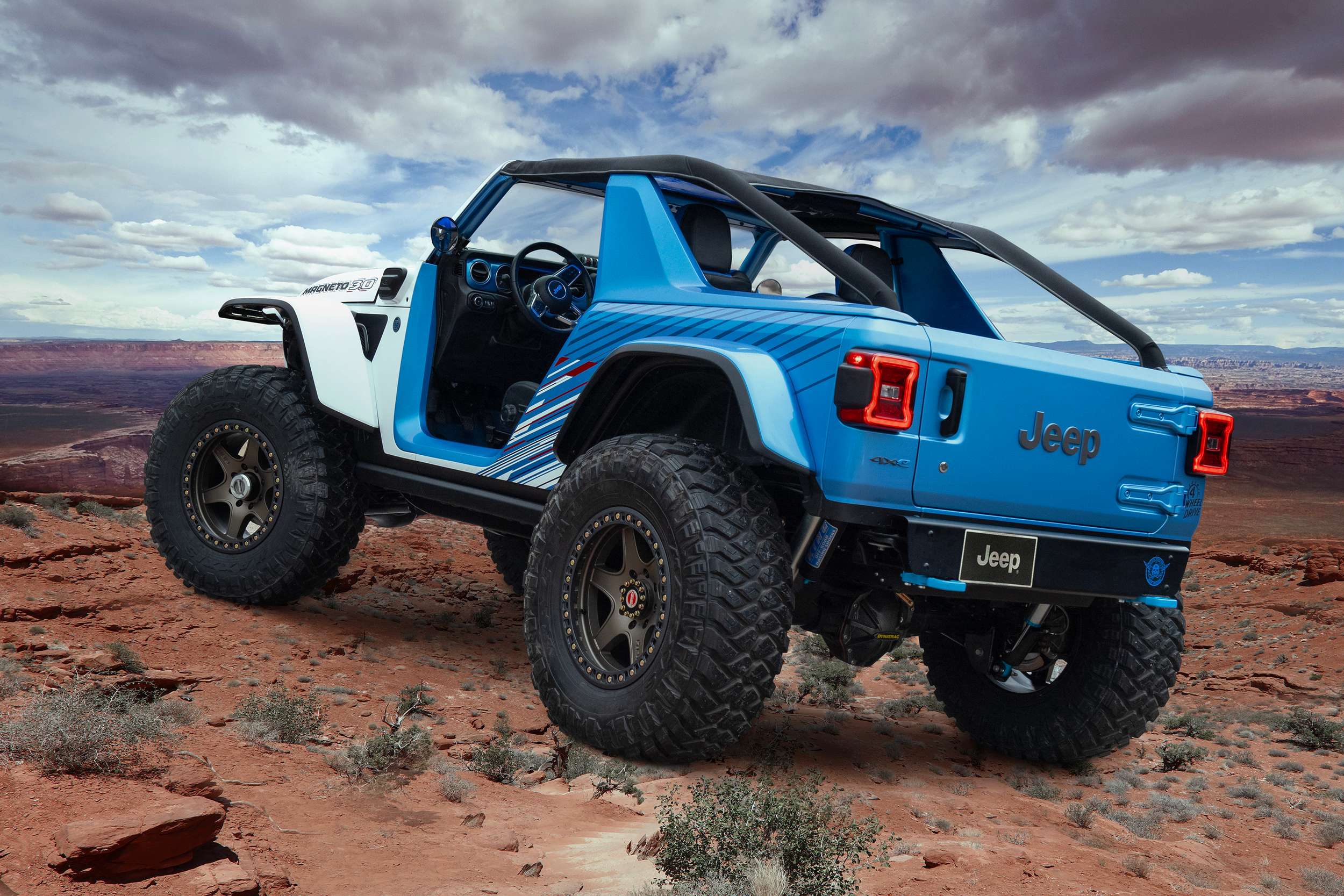
The custom-built electric motor has two settings. Mild, with 285 horsepower and 273 pound-feet of torque, and Maximum, that boots power to 650 horses and torque to 900 pound-feet. That torque figure is 50 higher than last year, and the power is still multiplied by a 6-speed manual gearbox taken from a Dodge Hellcat and then beefed up even more.
Seventy kilowatt-hours of battery are scattered in four packs around the EV. This year’s software updates give it 20 percent more range, though Jeep says this isn’t a range and charge speed exercise. It’s about using electricity to make a better off-road Jeep.
Dynatrac 60 front and 80 rear axles are fitted with 5.38:1 gearing. This year Jeep has added a new one-pedal “aggressive hill descent mode” to take full advantage of what the electric driveline can offer.
The electric motor turns 40-inch mud-terrain tires on 20-inch beadlock wheels. Magneto 3.0 has a custom 3-inch lift to make those meaty tires fit.
Jeep Scrambler 392 Concept

Jeep has built lightweight concepts for Easter Jeep Safari before. Concepts like Pork Chop, Stitch, and 4-Speed trimmed as much as half a ton from the Jeeps they were based on.
Scrambler 392 started as a 4-door Wrangler Rubicon 392 but was transformed into a 2-door. Jeep designers fitted rear bodywork from a Gladiator for a long-bed 2-door look. Then they laid back the windshield and lowered the roof, giving the rear all-new bodywork.

Under the paint, much of that bodywork is carbon fiber. The side blades, roof, and door openings are all made from the composite. The same goes for the front fenders and the hood. That helps Jeep cut 450 pounds from the Scrambler 392 concept, helping it get up and over rocks and other obstacles.
The new fenders and lightweight bumpers help the 40-inch tires fit in the arches. The 20-inch wheels and the tow hooks are painted in Brass Monkey, just like a standard Wrangler 392.
Jeep Wrangler Rubicon 4xe Concept
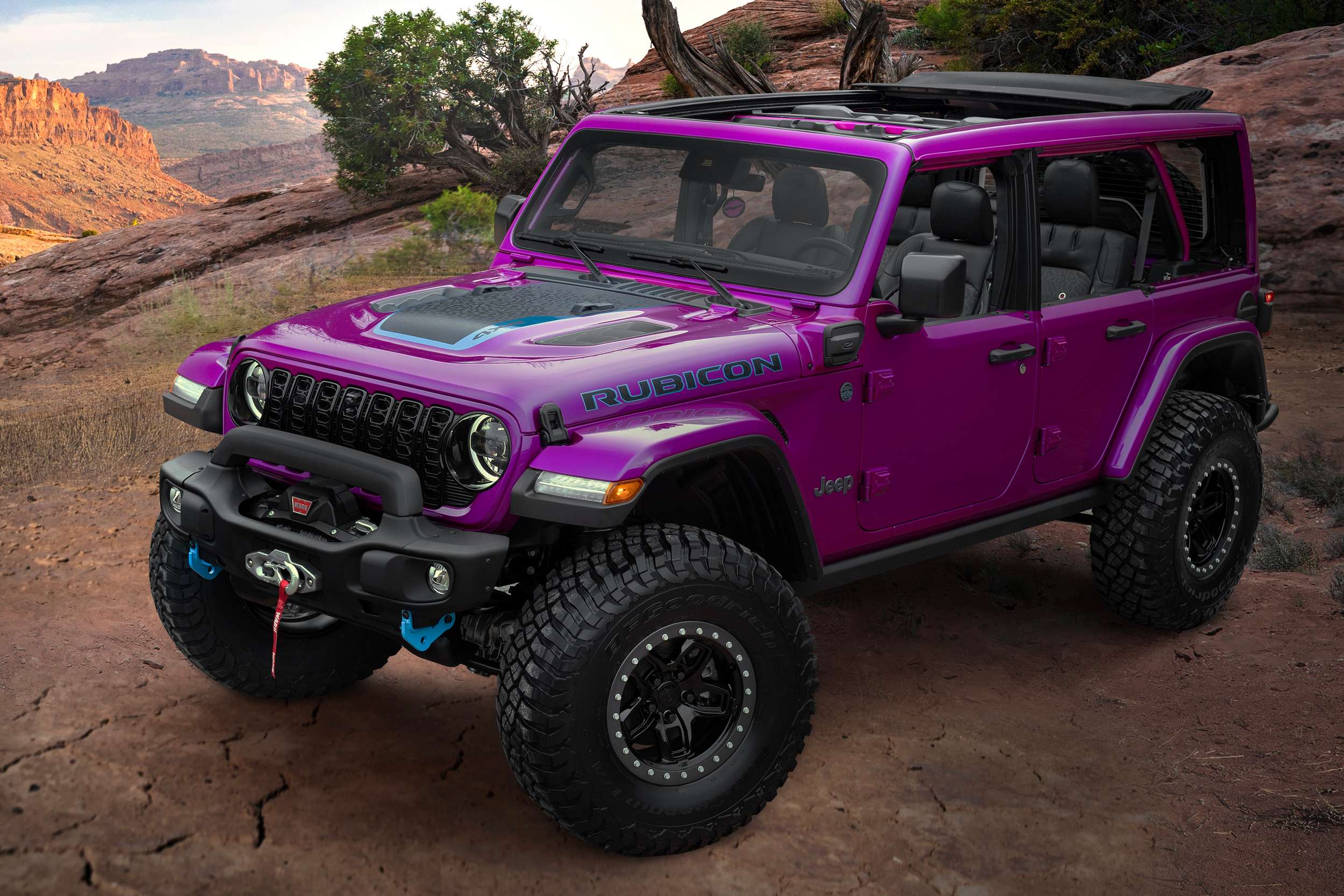
When Jeep launched Tuscadero Pink in 2021, it expected around 3,000 orders. Turns out that Jeep really underestimated its customer base. The company had to extend pink production by a month and still couldn’t meet all of the demand.
Instead of another year of Tuscadero, Jeep is bringing a new pink to market. The chromatic magenta hue doesn’t have a name just yet, and it will still change a bit before production, but this Jeep is meant to get feedback on the brand’s next production pink. Let them know how you feel.
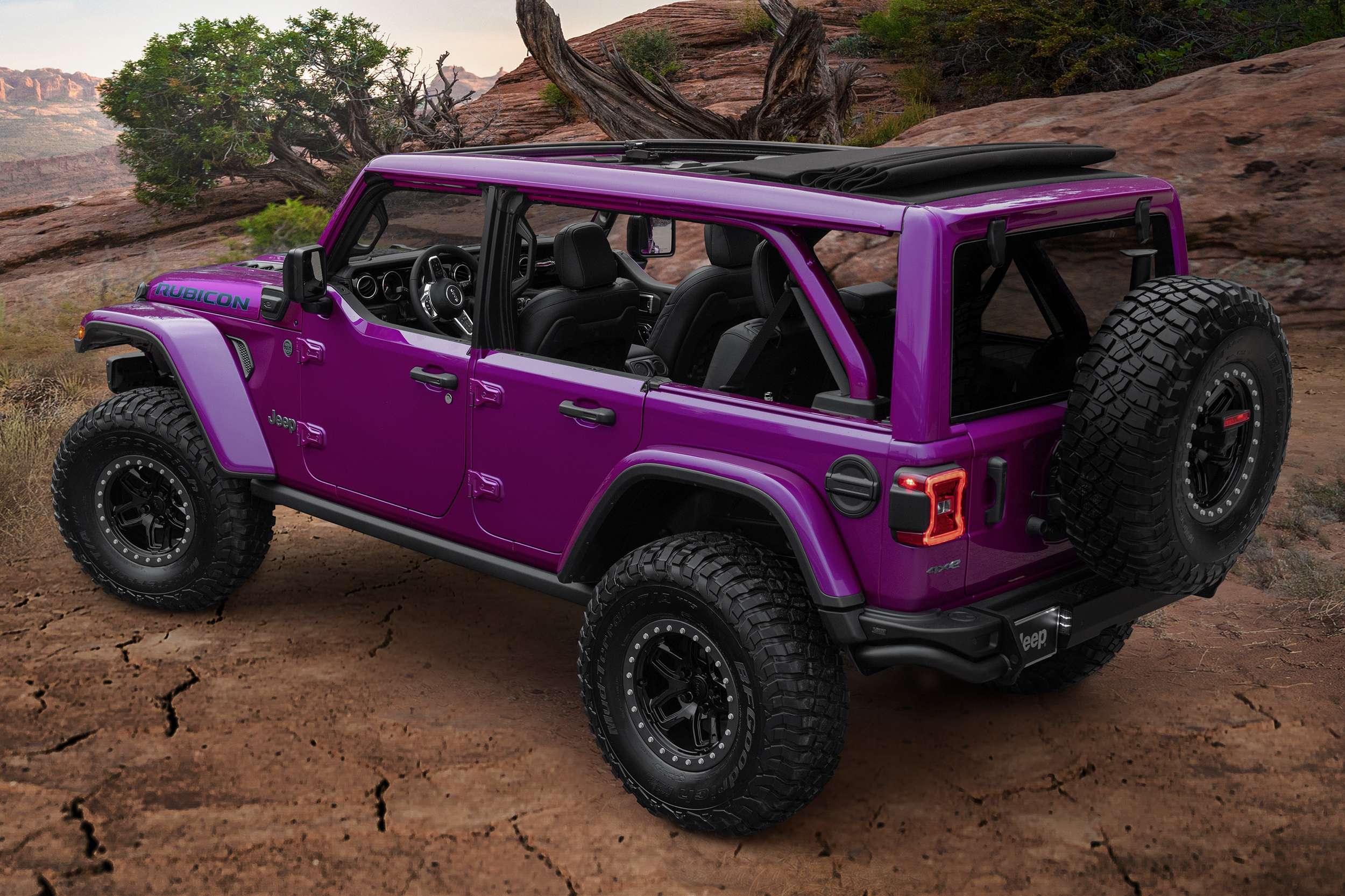
The other show-off on this Jeep is the new AccuAir air suspension kit. The kit, which is also on the Scrambler 392, can lift the Jeep from 1.5 to 5.5 inches on demand. Pop it up to get through deep water or over a tough rock, or drop it to duck under overhangs. Or lower it so it’s easier to get in and out.
Other small changes include a 20th Anniversary grille and custom graphics. It wears 37-inch tires on wheels from AEV , as well as front and rear bumpers from the off-road accessory company.
1978 Jeep Cherokee 4xe Concept
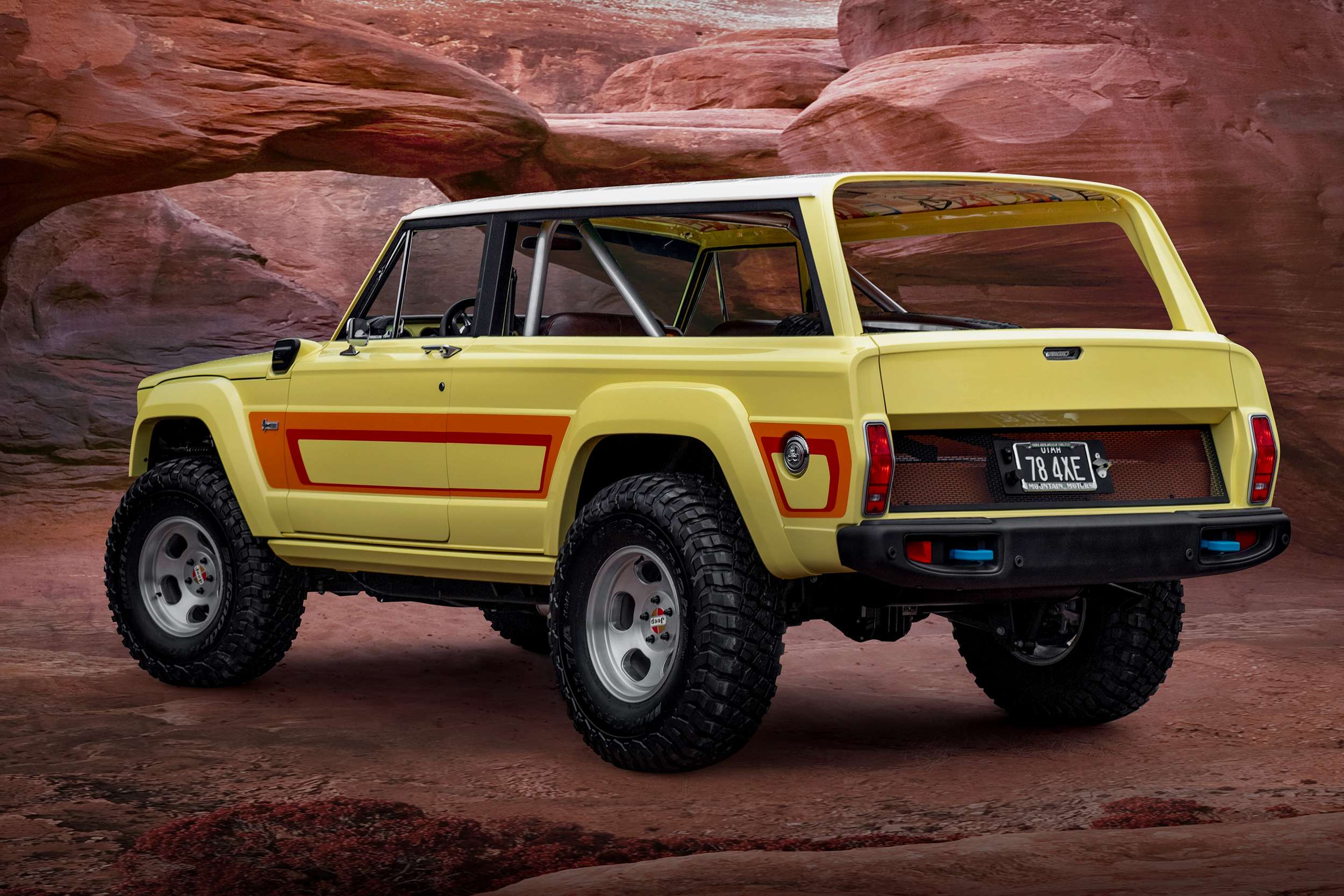
Jeep builds resto-mod concepts to try and inspire enthusiasts. The Cherokee 4xe is a 1978 Jeep Cherokee SJ that the company found on Craigslist for $2,500. It had a rough body and no engine, but Jeep didn’t want that old AMC mill anyway. Sorry, Jeep purists.
The Cherokee body was dropped on the chassis of a 2022 Wrangler Rubicon 4xe . That took some bodywork, like altering the wheel arches. Jeep’s designers and engineers added a ton of resto-mod-style upgrades, too, with plenty of new sheet metal. The front bumper is from a Wrangler Rubicon, and the rear is from a Gladiator.

Jeep’s intent was a modern take on the “Good Vibes” campaign Dodge ran in the 1970s, and it is right on the mark.
The rear of the Cherokee is stripped, and it has a graffiti-look ceiling. The glass is all gone to give it an open-air feel. The seats are wonderfully ’70s, there is a gas cap from an AMC Gremlin, and the dashboard is home to an 8-track player. Which, unfortunately, isn’t hooked up.
Grand Wagoneer Overland Concept

The first Easter Jeep Concept based on the new Grand Wagoneer is a bit of an overlanding condo.
Jeep’s team got hold of a RedTail Overland Skyloft hard-sided rooftop tent. Though, calling it a tent is an understatement.
The carbon fiber Skyloft is weatherproof and is heated. It has dual pane windows, an integrated diesel heater, and up to 380 watts of solar power. This level of fancy camping is just perfect for the Grand Wagoneer.
Jeep pulled out the second- and third-row seats. Then they removed the rear sunroof to make a sort of escape hatch. You can climb up through that hatch to get into the Skyloft.

The space where the seats were is now a lounge. It still has the Grand Wagoneer’s rear seat entertainment system. It also has two big beanbag chairs, a plush throw rug, and ambient lighting. It’s nicer (and larger) than my first three apartments.
Widened wheel openings and new flares help fit 35-inch tires on custom wheels. The larger tires raise the ride height an inch and a half. The Grand Wagoneer has a black Rhino-lined roof, and the body is painted in an industrial green.
Oh yeah, and the Grand Wagoneer has frickin’ laser beams! Jeep fitted laser-powered off-road lamps in the tweaked front bumper to light up the night.
Jeep Wrangler Rubicon 4xe Departure Concept

Departure is the first of the two concepts that promote parts Jeep Performance Parts (JPP) might build. The Departure gets a cool new tubular spare tire mount that can flip. Turn the spare into the trunk for a better departure angle, and turn it out for more cargo space. Whichever you need.
The Departure concept also gets a new tubular grille guard. The guard quickly folds down to give you a four-foot bench seat for relaxing on the trail.

Windshield header-mount off-road lights fold upward on custom brackets. So they’ll still work with the window folded forward. There are rock lights at all four corners, JPP hard MOLLE panels in the roll bar, and new flat fender flares that hold bigger tires while staying street-legal for lighting requirements.
This one also has a Jeep Performance Parts 2.0-inch lift with Bilstein remote reservoir shocks. The 17-inch wheels wear 37-inch tires.
Jeep Gladiator Rubicon Sideburn Concept
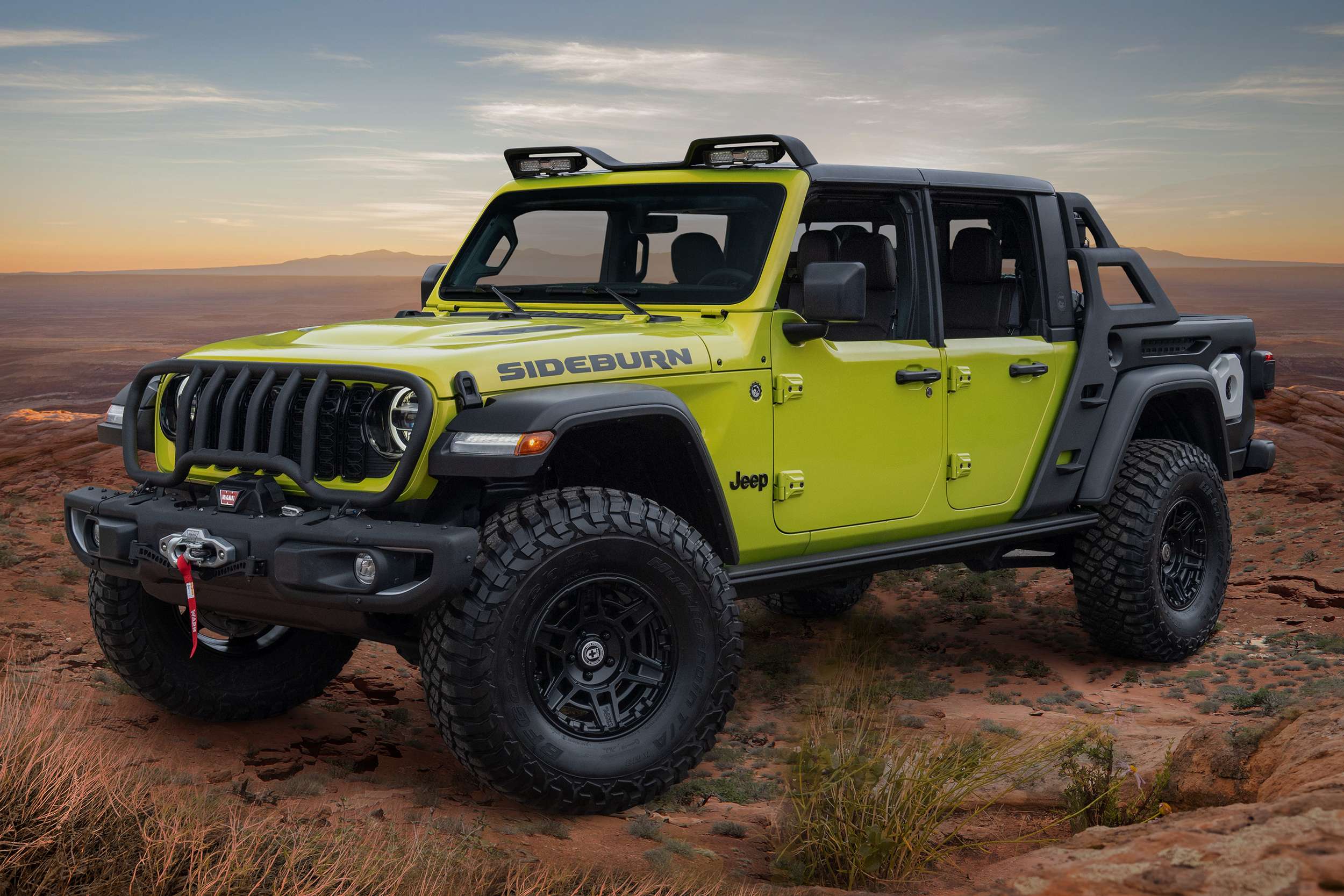
Last but not least is the Sideburn concept. It gets the same 2.0-inch lift and shocks as Departure. It also has a folding grille guard bench and Warn winch .
Sideburn’s coolest bits are at the back. The sport bar is actually a two-tier cargo shelf. It’s made from carbon fiber and steel and has integrated steps to let you get to your stored gear. Eight tie-down loops let you lock in cargo totes.
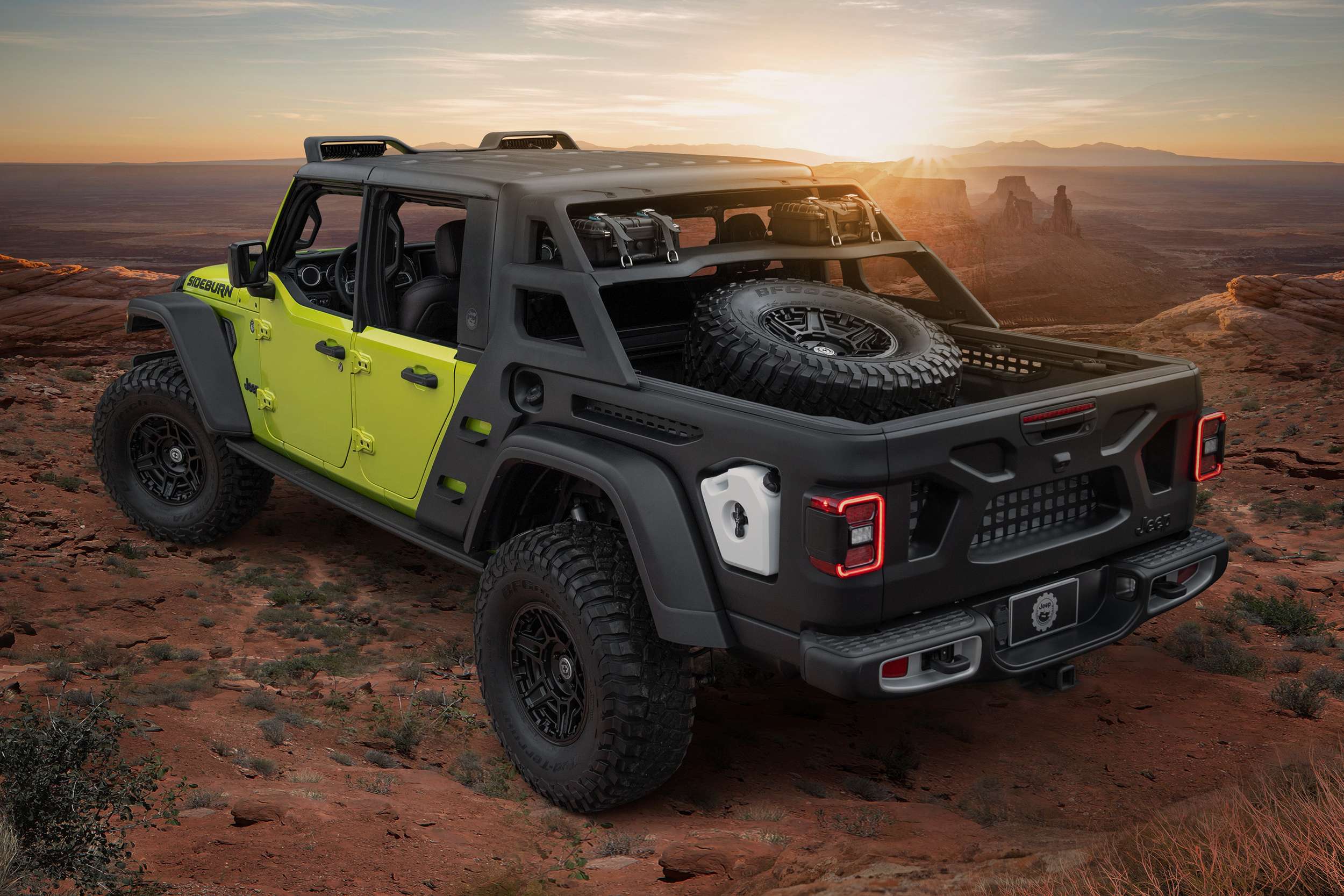
The box sides are also super cool. Built-in MOLLE panels above and behind the arches give you more secure storage. There are integrated RotoPaX containers, too, letting you store liquids on the outside of the box. Other JPP bits include a heavy-duty vinyl floor system, side steps, grab handles, and half doors.
2023 Easter Jeep Safari Concepts
Jeep will bring all of the concepts to the trail at the 57th Annual Easter Jeep Safari on April 1-9. We’ll even get to drive them, so you can expect our up-close and personal take with more details and interior shots on these seven sweet rides very soon.


What's It Like Behind the Wheel of Jeep's EJS Concepts? We Have the Answers
We just went off-roading in Jeep's latest concept vehicles in Moab at the world's most well-known Jeep gathering, Easter Jeep Safari. Read more…

Evan Williams has been drooling over cars since the time he learned to walk. He went to school for engineering, but transitioned into a more satisfying career in automotive and outdoor media, and has been at it for nearly a decade now. Evan is based in Halifax, Nova Scotia, Canada, and is the Motors News Lead at GearJunkie. He spends his non-automotive time walking his dog, hiking, cycling, jogging, and trying not to be too much of a hack mechanic.
Follow Us On
Subscribe Now
Get adventure news and gear reviews in your inbox!
Join Our GearJunkie Newsletter
Gear Top Stories Deals

- Arts in Moab
- Arches National Park
- Arches Reservations
- Arches Webcams
- Canyonlands National Park
- Colorado River
- Dead Horse Point
- Dinosaur Museums + Hikes
- La Sal Mountains
- Movie Sites
- Night Skies
- Sand Flats Recreation Area
- Scenic Byway U-128
- Scenic Byway U-313
- Scenic Byways Overview
- Southern Utah National Parks
- Winter in Moab
- Accessible Adventures
- ATV/UTV Riding
- Bird Watching
- City Recreation
- E-Bike Guide to Moab
- Guides + Outfitters + Services
- Horseback Riding
- Motorcycle Road Touring
- Motorcycle Trail Riding
- Mountain Biking
- Photography
- River Activities
- Road Biking
- Rock Climbing + Canyoneering
- Scenic Flights
- Winter Activities
- Bed and Breakfasts
- Campgrounds
- Campgrounds - BLM
- Campgrounds - Commercial
- Campgrounds - National, State + Forest
- Guest Houses
- Hotels + Motels
- Property Management
- Accessibility
- Be Prepared
- Calendar of Events
- Do It Like A Local
- Free Travel Guide
- Fire Restrictions
- Group Tours
- Moab Canyon Pathway
- Moab Outdoor Adventure Guide
- Nature's Masterpiece
- Pet Information
- Press and Media
- School Packet
- Sun/Moon Rise/Set
- Sustainable Tourism
- Grocery Stores
- Laundry Services
- Long Term Vehicle + Trailer Parking
- Moab Info Center
- Poop Disposal
- Restaurants + Caterers
- RV Fill/Dump Stations
- Shower Facilities
- Waste Disposal + Recycling
- Volunteer - Recycling
- 4WD Rentals
- Airline Service
- ATV/DirtBike/Motorcycle/RV Rentals
- Moab Area Transit
- Shuttle + Taxi Service
- Train Service
- Vehicle Rentals

- Search for:
- moab snapshot
- submit event
- Arts In Moab
- Dinosaur Museum + Hikes
- Scenic Byways
- Lodging + Campgrounds
- Area Info + Services
- ATV / Dirt Bike/ Motorcycle Rentals
- Shuttle & Taxi Service
- Arches Nat'l Park
- Canyonlands Nat'l Park
- Campgrounds - Intro
- Moab Snapshot
- Press and Media Resources
- Welcome to Moab 4K Film
- Moab Information Center
- Restaurants
« All Events
- This event has passed.
Easter Jeep Safari
March 23 - march 31.
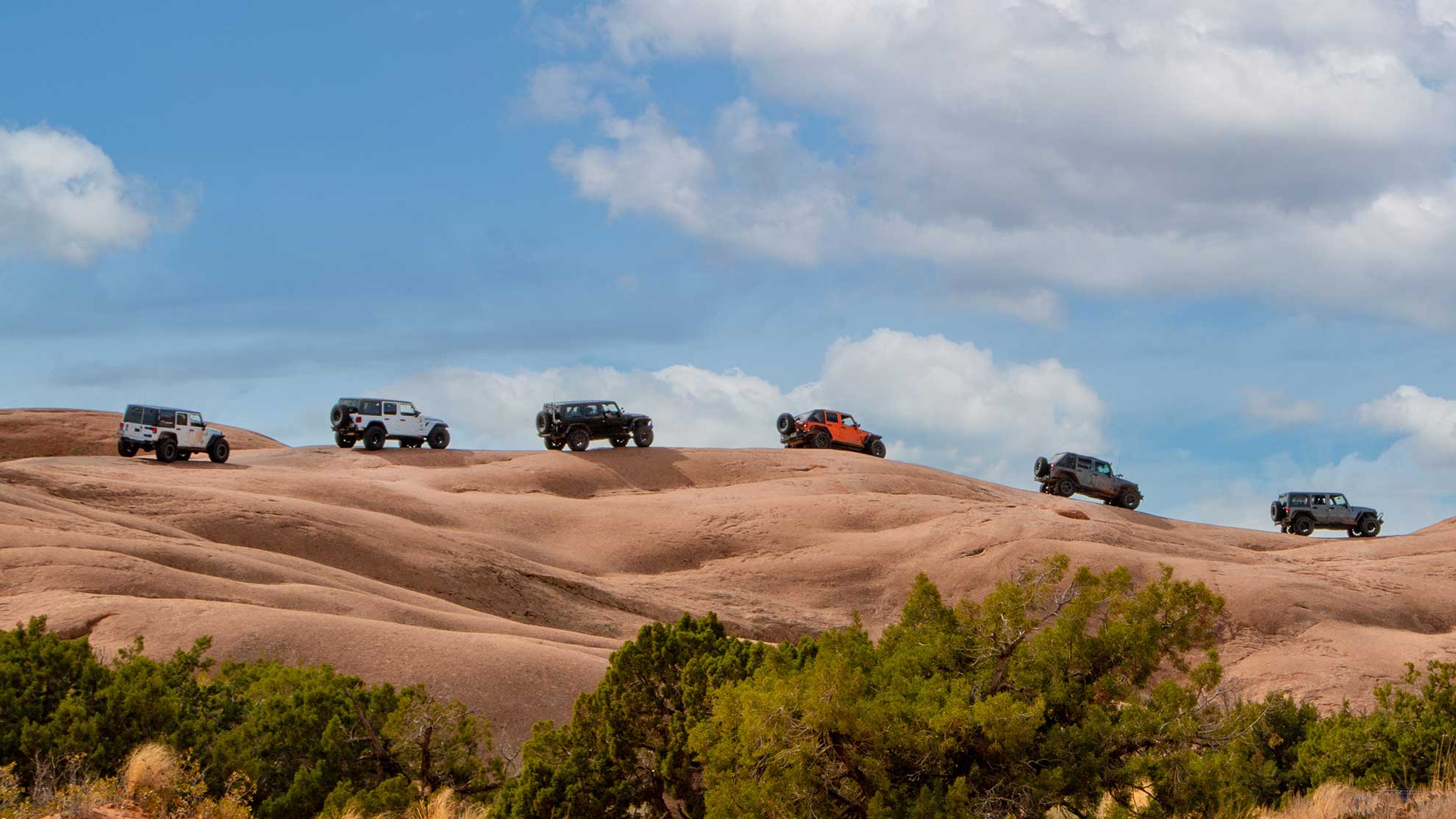
The Easter Jeep Safari consists of trail rides, mostly day long trips, departing from Moab Utah throughout the 9 day long event. The official event is hosted by the Red Rock 4-Wheelers Inc. one of the local four wheel drive clubs of Moab.
Participants provide their own four wheel drive vehicle, take care of their own food and non-alcoholic beverages for the trip. Suggested essentials, beyond plenty of water, include sun protection, and layered clothing in case of changing weather circumstances that are always a possibility during the spring in southeastern Utah.
Start: March 23
End: March 31
This calendar is a courtesy for area visitors. Inclusion does not imply endorsement by Grand County, Utah. We make no warranties, express or implied, about the accuracy of the listed information. Grand County and its agents are not liable for any resulting liabilities or business practices of companies or event organizers mentioned or linked to on this website. Event organizers are solely responsible for obtaining all required permits for their events.
For a more optimal web experience, please view our site on Microsoft's recommended browser, Edge. You can download it here .
- Jeep Compass vs Tata Safari [2021-2023]
CarWale brings you comparison of Jeep Compass and Tata Safari [2021-2023]. The Jeep Compass price is Rs. 18.99 Lakh and Tata Safari [2021-2023] price is Rs. 15.65 Lakh. The Jeep Compass is available in 1956 cc engine with 1 fuel type options: Diesel and Tata Safari [2021-2023] is available in 1956 cc engine with 1 fuel type options: Diesel. Safari [2021-2023] provides the mileage of 16.1 kmpl.
Compass vs Safari [2021-2023] Comparison Overview

- SPECIFICATIONS
Expert's Take
Specifications and finance, more expert reviews on compass and safari [2021-2023].

By Aditya Nadkarni 02 Sep 2022
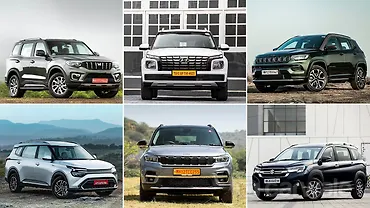
By Sagar Bhanushali 30 Jul 2022

By Nikhil Puthran 02 Mar 2022
Compass comparison with similar cars
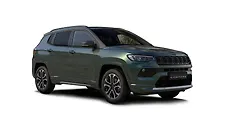
Safari [2021-2023] comparison with similar cars
![Tata Safari [2021-2023] Tata Safari [2021-2023]](https://imgd.aeplcdn.com/227x128/n/cw/ec/40027/safari-exterior-right-front-three-quarter-2.jpeg?q=80)
Compass vs Safari [2021-2023] Comparison FAQs
- Compare Cars
Hrmm. Looks like you're using an older browser, which means some site features may not work they way they should. For the full gadventures.com experience, we recommend upgrading to the most recent version of your browser . It's worth it! Honest!
View all tours
North America
Central america & caribbean, south america, north africa & middle east.
Few travellers make it to this icy continent, but the lucky ones who do get to explore a frozen Eden ruled by the elements and teeming with wildlife.
G Adventures Land
G adventures sailing & cruises, g adventures private travel.
Whether it’s a family retreat or a girls trip, you can surround yourself with a hand-picked crew and customize a tour that fits you all perfectly.
The Geluxe Collection
Our new line of premium active adventures is officially here. With perfectly paced itineraries, one-of-a-kind accommodations and elevated dining, this is adventure at its finest.
National Geographic Journeys
Go deeper into the cultures and habitats of the places we explore. More is included and you’ll enjoy greater hands-on exploration, interactions with local experts, and freedom to roam.
National Geographic Family Journeys
Are you an adventure-loving family in search of meaningful ways to discover the world together? These tours are specially designed for travellers seven and up and their inquisitive families.
Jane Goodall Collection
Step deeper into the animal kingdom while respecting all of its inhabitants. Our incredible collection of wildlife-focused tours is endorsed by the world-renowned ethologist.
Roamies by Hostelworld
The thrill of adventure. The awesomeness of hostels. Get ‘em both on these immersive small group trips for 18 to 35-year-old travellers.
Why choose us
As the leader in small group travel for 30 years, we know how to do it right: flexible itineraries, freedom to roam, safety, peace of mind, and locally based guides.
Change the world just by having the time of your life. When you travel with us, you become a force for good by acting responsibly and creating positive impact.
Together with our non-profit partner, Planeterra, we ensure local communities touched by our tours benefit from our visits in as many ways possible.
Trees for Days
Leave your destination even greener than you found it! For every day on tour, we’ll plant a tree in your honour and ensure that our forests get to live their best lives.
Travel resources
Last minute deals.
Looking to have the time of your life in the next 90 days or so? You can save big if you’re ready to book now.
Loyalty discount
Back home from a G Adventures tour? Submit a quick trip evaluation to save 5% on your next tour with us.
Student discount
Got proof that you’re pursuing higher learning? Then we’ve got a travel voucher with your name on it.
All travel deals
New ways to save pop up all the time. Here’s where you’ll find every hot deal in one easy place.
Bosnia and Herzegovina: Wild Horses & City Sights
7 days, trebinje to sarajevo.

- Full itinerary
- Tour details
Get ready to uncover a hidden Balkan gem with your new crew on this whirlwind seven-day journey through Bosnia and Herzegovina. With a perfect mix of culture, history, and jaw-dropping natural beauty, it's easy to see why Bosnia is climbing the bucket list ranks. Feed your adventurous spirit with a thrilling jeep safari, river rafting, and a waterfall swim, and fuel up on delicious local cuisine and regional beers. Dive deep into Bosnia’s rich history with guided walking tours and iconic landmarks, and leave with new friendships, incredible memories, and a camera roll full of epic moments. Ready for the ride of a lifetime? Let’s go!
Trebinje to Sarajevo
Is this tour for me, travel style: 18-to-thirtysomethings.
Fast, fresh, and fun adventures that never slow down, made for young, budget-minded travellers.
Service Level: Basic
Simple and clean hotels and hostels; affordable public and private transport; lots of optional activities.
Physical Rating: 2 - Light
Light walking and hiking suitable for most fitness levels. Nothing too challenging.
Trip Type: Small Group
Small group experience; Max 16, avg 12.
Age requirement: 18-39
Check your visa requirements.
Before booking, use our handy entry requirements tool so you know which documents you need to enter and travel through the countries on your trip.
See how your trip uplifts communities
In a number of impactful ways, your adventure directly benefits the local people and places we visit.
Help us spread love around the world with Trees for Days. Together with Planeterra, we'll plant one tree in your name for every travel day.
Trees planted for this trip: 7

Places visited
- Bosnia and Herzegovina
Day 1 Trebinje
Arrive at any time. Tonight, after connecting with your CEO and fellow travellers, head out for an orientation walk along the river and into the old town. Explore the walled city and start to understand what makes Trebinje so unique. After, kick back and enjoy the evening with your new friends.
Exclusive Inclusions:
Day 2 trebinje/livno.
Jump head first into some of the coolest places and experiences that Bosnia has to offer. Step back in time exploring an old Ottoman fortress turned art colony, take a dip in the refreshing waters of Kravica Waterfalls, and watch for wild horses on a sunset Jeep safari. This evening, get to know your fellow travellers better with a BBQ dinner before counting the stars around a campfire.
Meals included:
Day 3 livno/mostar.
Set off from Livno this morning and drive south to the picturesque and historic village of Blagaj. Take in views of the Dervish Monastery, dramatically built on cliffs by the water at the mouth of the Buna River. Take a dip in the water if the weather is nice before continuing on to the nearby city of Mostar for a guided walking tour to better soak in the beauty and history, with plenty of time for photos at the iconic old bridge. The rest of the evening is free to grab a bite to eat somewhere or to relax by the river.
Day 4 Mostar/Konjic
Hop on a morning train to the city of Konjic and transfer to our lodge. After gearing up, get the adrenaline flowing on a white water rafting excursion on the Neretva river with your group mates before a delicious bbq lunch afterwards. Take the rest of the afternoon to relax at the lodge, explore the city or to visit Tito's Bunker for a glimpse into the former Yugoslavia's communist-era past.
Day 5 Konjic/Sarajevo
Travel again by train from Konjic to Sarajevo, the vibrant capital of Bosnia and Herzegovina. There's no better way to connect with the local culture than exploring their cuisine. Head out on an immersive food tour with a local expert this morning. Step away from the tourist hot spots to experience life in Sarajevo through a local's lens. Take the rest of the day to continue exploring the city or to take an optional street art and hands-on graffiti tour.
Day 6 Sarajevo
Get out and explore on a full free day in the beautiful city of Sarajevo. Dive into the history and tragic past with countless museums and culturally significant monuments, take a funicular up to the old Olympic bobsled track or pass the afternoon away at one of the many cafes. Those looking for an active option could choose to do a hike in the Rakitnica Canyon. Regroup In the evening and head out on the town for a Big Night Out with the group for the final evening.
Day 7 Sarajevo
Depart any time but feel free to sneak in some last minute-photos before you head back home.
What's Included
- Your Welcome Moment: Welcome Moment - Meet Your CEO and Group
- Your First Night Out Moment: Connect With New Friends
- Your Foodie Moment: Sarajevo Food Tour, Sarajevo
- Your Big Night Out Moment: Sarajevo
- Trebinje orientation walk
- Explore the Počitelj Fortress and art colony
- Visit Kravica Waterfall
- Take a sunset jeep safari in search of wild horses
- BBQ dinner and bonfire in Livno
- See the Dervish Monastery and explore Blagaj
- Guided walking tour of Mostar
- Whitewater rafting on the Neretva River with bbq lunch
- Transport to/from all included activities and between all destinations
Accommodations
Hotels and guesthouses (6 its, twin share)
6 breakfasts, 2 lunches, 1 dinner Allow USD110-145 for meals not included.
Transportation
Private bus, public bus, raft, walking
Staff & experts
CEO (Chief Experience Officer) throughout, local guides.
Make it a private tour
Book this tour as a private departure, with your own CEO and all the benefits of a G Adventures group tour.
Surgut map, satellite – loading . . .
Khanty-mansiyskiy avtonomnyy okrug - yugra, 🌍 surgut map.
Name: Surgut
Latitude: 61°15'00"N
Longitude: 73°25'00"E
City: Surgut
Region: Surgut
Region: Khanty-Mansiysk Autonomous Okrug – Ugra
Region: Ural Federal District
Country: Russia

Share ×

Scan the QR code and open PeakVisor on your phone
❤ Wishlist ×
See all region register, peakvisor app, khanty-mansiysk autonomous okrug – ugra.
Welcome to the land of sheer silent whiteness. Its vast expanses are filled with fresh Arctic air, howling winds, and the spirit of true adventure. Come with us to the lands of the ancient Khanty and Mansi tribes that survived in this harsh climate of the Nether-Polar Urals . See the mountains that defy any logical or geological reason for their existence. Experience the wonders of this sparsely populated land where you can hardly see a human trace. Welcome to Yugra!
Flora & Fauna
Water resources, landmarks and tourism, major mountains, mount narodnaya, mount zaschita, mount neroyka, the pyramid mountain, samarovskaya mountain, ski and sports facilities, protected sites, reserves, national and natural parks, rivers and lakes, major cities, khanty-mansiysk.
The Khanty-Mansiysk Autonomous Area – Yugra (KhMAO) is located in the central part of the West Siberian Plain, stretching from west to east from the Ural Range to the Ob-Yenisei Watershed. The vast areas of this plain, as well as the Lower Priob region, are considered one of the most recently inhabited areas.
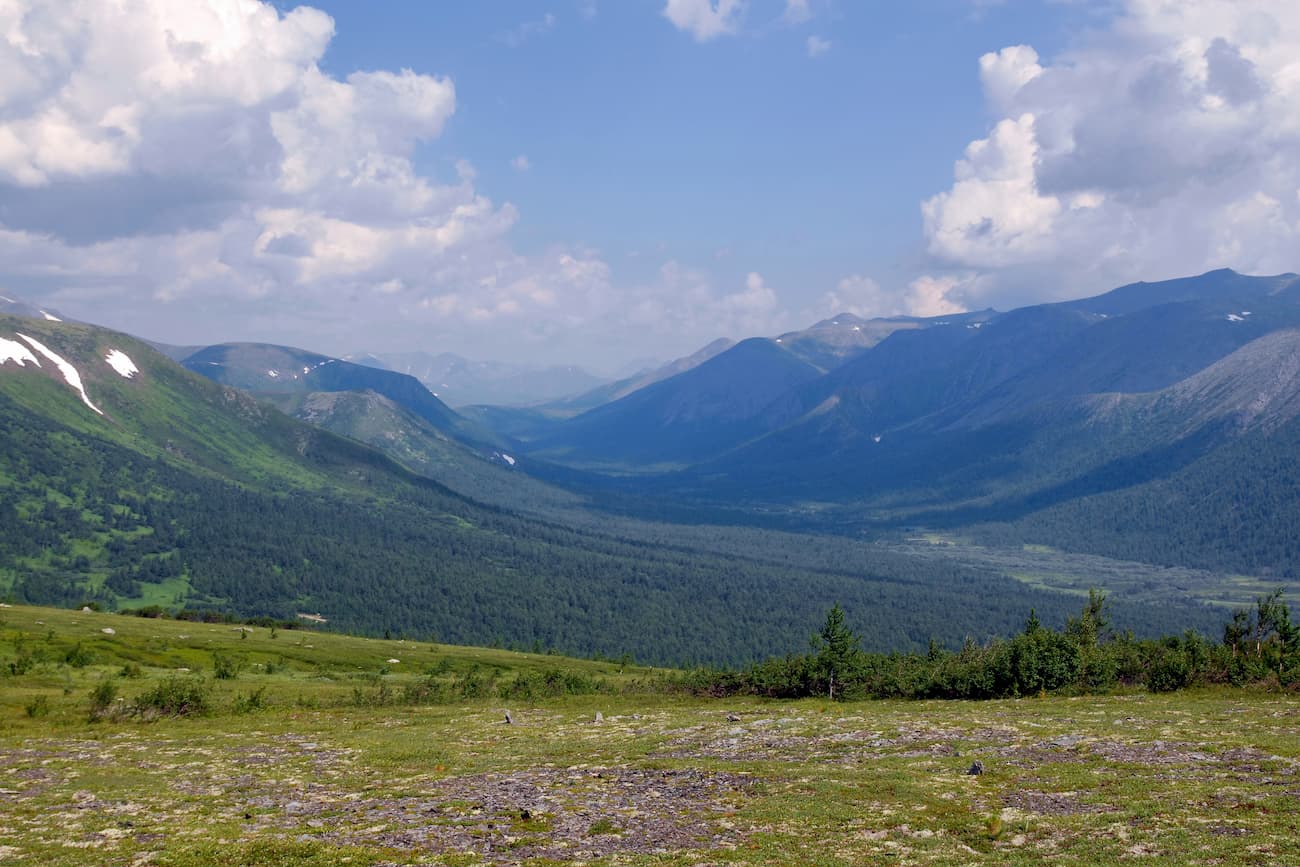
The Khanty-Mansiysk Autonomous Area (KhMAO) was established in 1930. Its name comes from two main northern indigenous peoples – the Khanty and the Mansi. From 1944 it was legally part of the Tyumen Region , but in 1993 the Area received autonomy and became a full-fledged territorial entity of the Russian Federation. It is a part of the Urals Federal District. The administrative centre is the city of Khanty-Mansiysk , whereas the largest city is Surgut. The word Yugra was introduced to the name of the Khanty-Mansiysk Autonomous Area in 2003 to pay tribute to the old name used by the locals to call the territories lying beyond the North Urals.
The KhMAO borders the Komi Republic in the north-west, the Yamalo-Nenets Autonomous District in the north, the Krasnoyarsk Area and the Tomsk Region in the east and south-east, the Tyumen Region in the south and the Sverdlovsk Region in the south-west.
The area of the territory is 534,801 sq.km, the length from north to south is 800 km, from west to east is 1400 km. The population of this huge territory is 1,674,676 people as of 2020, which is the same amount as people living in Barcelona or Munich.
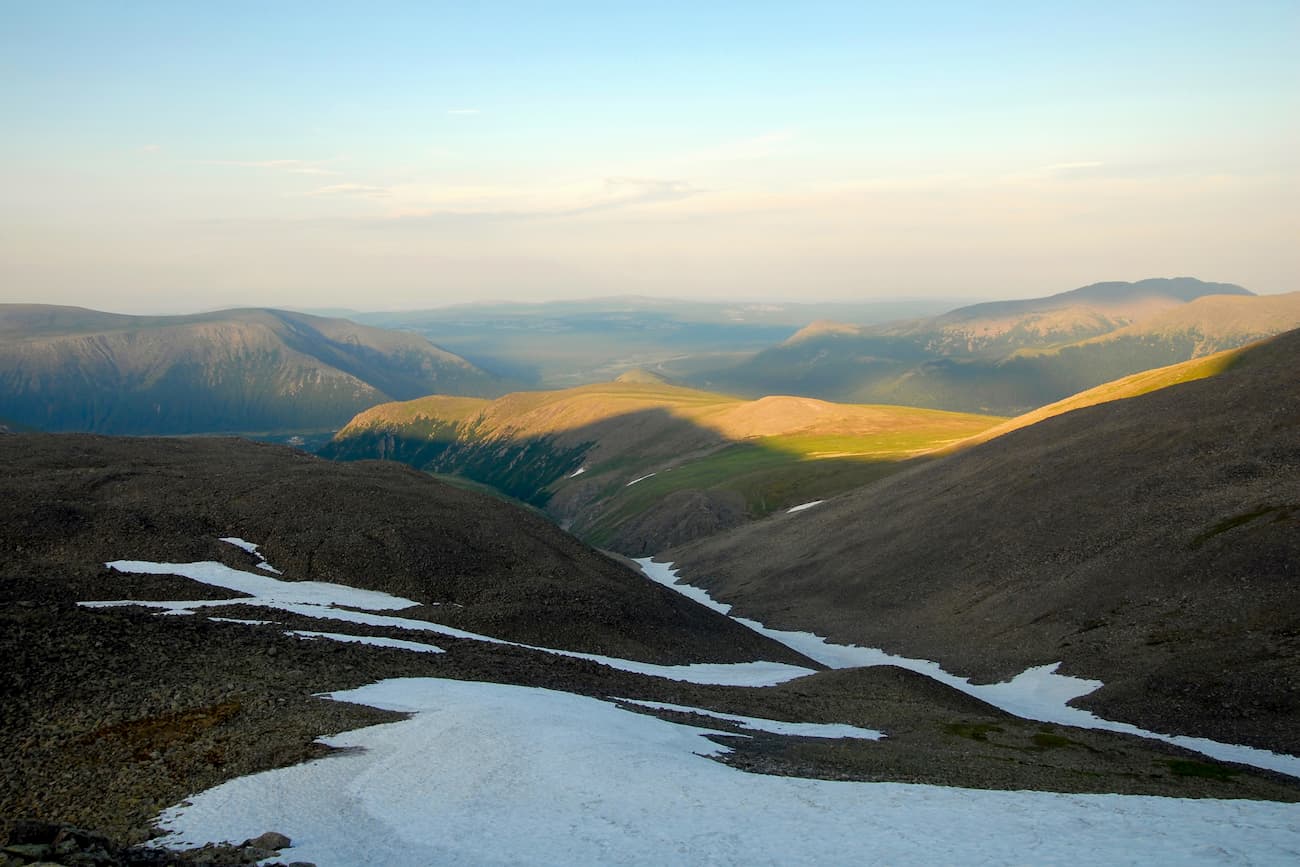
The main part of the territory is a huge, poorly dissected plain where absolute elevation marks rarely exceed 200 meters above sea level. The western part of the KhMAO territory is characterized by low and middle mountainous terrains with some Alpine relief featured in the Subpolar Urals. Here are ridges and spurs of the mountain system of the North Urals and the Subpolar Urals. The maximum absolute elevations are on the border with the Komi Republic . Mount Narodnaya (1,895m) is the highest peak.
More than 800 species of higher plants grow in the Khanty-Mansi Autonomous Area . Almost the entire territory is covered by taiga forests that occupy about 52% of the area. Spruce, fir, pine, cedar, larch, birch, alder grow here. In the northern parts of the area, the composition of the vegetation is greatly influenced by perennial permafrost. Light lichen grasslands which are used as deer pastures are widespread there. Tundra dominates in the mountainous and hilly areas. River floodplains and lowlands are characterized by meadow vegetation, the so-called water meadows. High floodplains of large rivers are mainly covered with woods that mainly feature willows, birches and aspens. Forests and swamps are rich in berries and various valuable plants, most of which are used in traditional indigenous medicine.
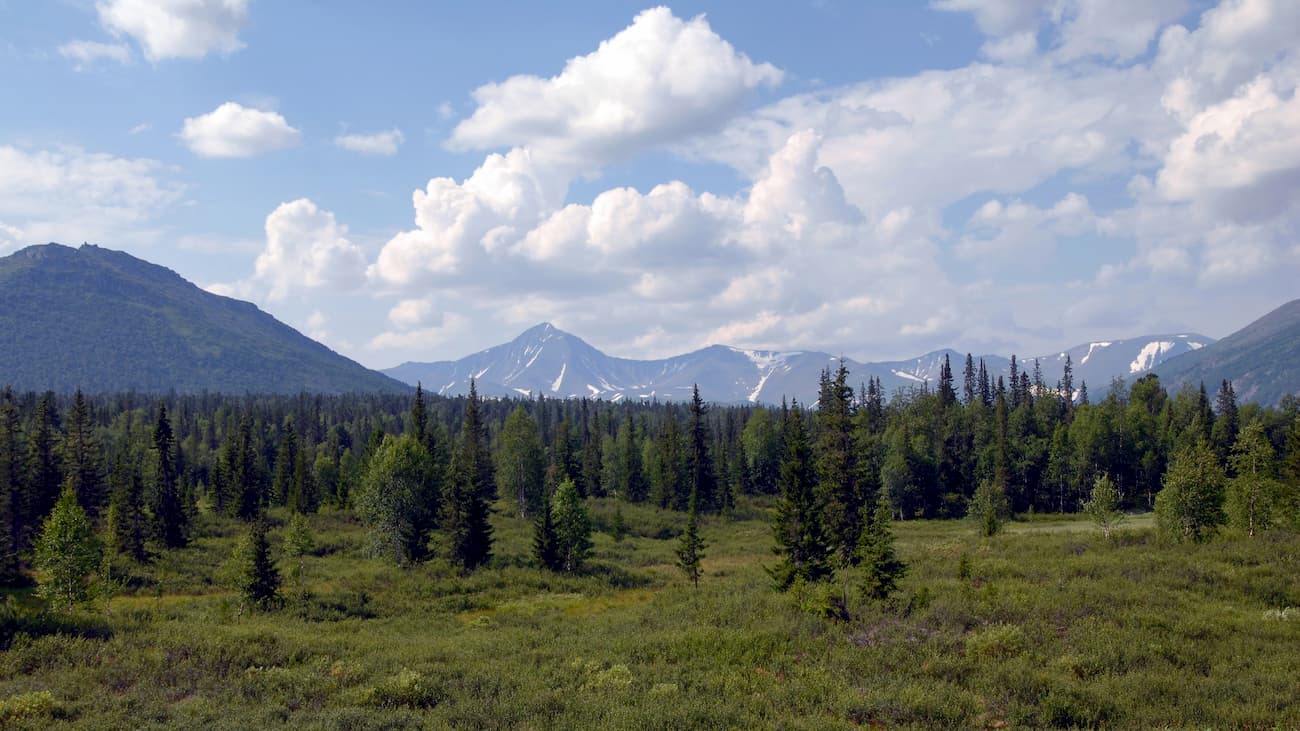
The animal world is typical for the Russian taiga zone. There are 369 species of vertebrates. Mammals are represented by 60 species (28 of them are commercial species). The most common and valuable of them are wild reindeer, elk, fox, sable, fox, squirrel, marten, ermine, Siberian weasel, polecat, mink, weasel, otter, hare and others. Wolverine and West Siberian river beaver are included in the Red Book of Russia.
There are 256 bird species in the region, including 206 sedentary and nesting species. Some rare bird species are listed in the Red Book. There are 42 species of fish in rivers and lakes. Of these, 19 species are commercial, among them are starlet sturgeon, lelema, muksun (whitefish), pelyad, chir, lake herring, wader, tugun, freshwater cod, pike, ide, roach, bream, fir, perch, ruff, golden and silver crucian carp, carp (carp is grown in the cooling ponds of the Surgutskaya and Nizhnevartovskaya hydroelectric plants). Sturgeon is listed in the Red Book. There is an abundance of mosquitoes and gnats in the area, the greatest activity of which is in the second half of summer.
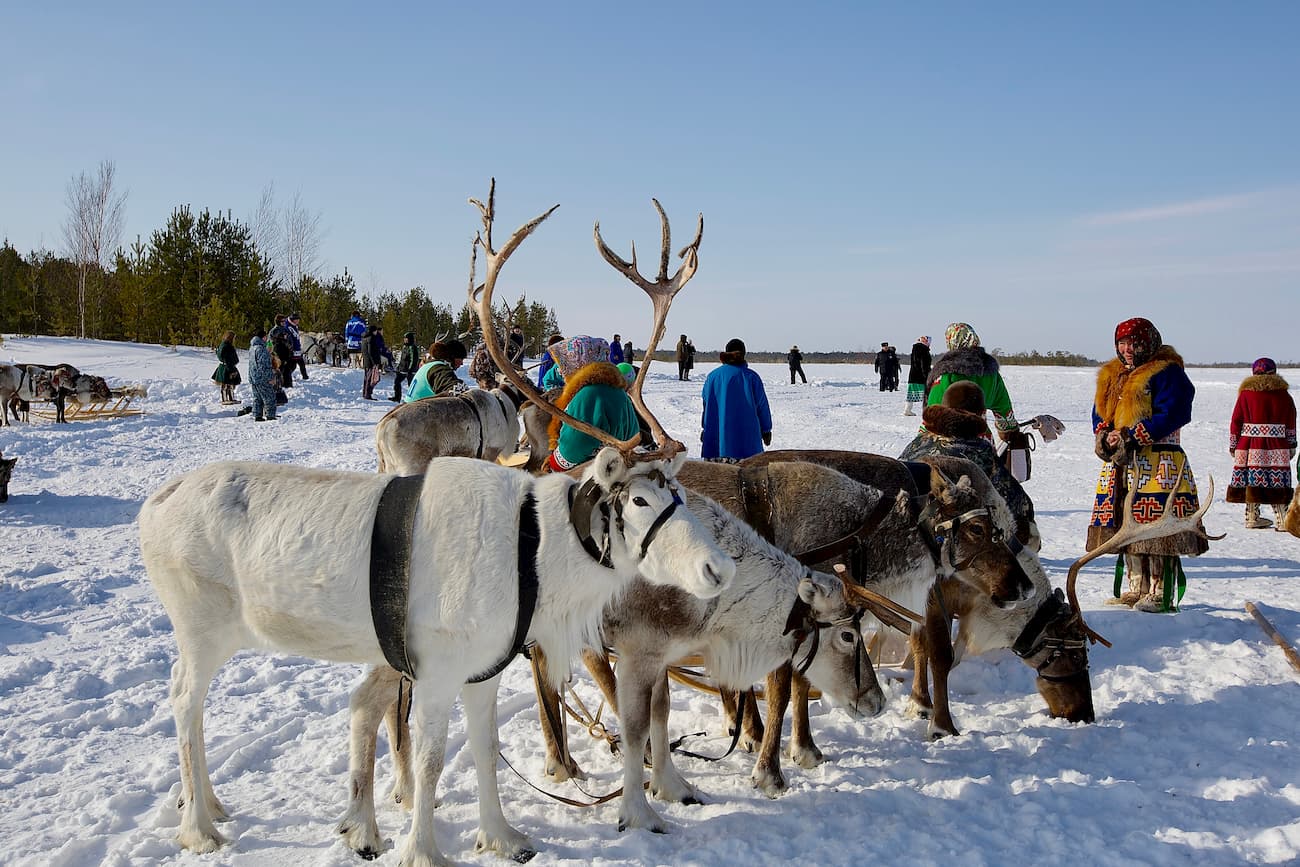
Yugra can boast of over 2 thousand large and small rivers, the total length of which is 172,000 km. The main rivers are the Ob (3,650 km), the Irtysh (3,580 km). These are some of the largest rivers in Russia. Other significant rivers include the tributaries of the Ob (the Vakh, Agan, Tromyogan, Bolshoy Yugan, Lyamin, Pim, Bolshoy Salym, Nazym, Severnaya Sosva, Kazym rivers), the tributary of the Irtysh (the Konda River) and the Sogom River. Ten rivers are over 500 km long. All the Yugra rivers with the exception of the rivers in the Ural part of the region are characterized by rather slow currents, gentle slopes, some surge wave phenomena, spring and summer floods. The Ob River basin extends over a distance of 700-200 km from the mouths of its tributaries. Such abundance of water facilitates the appearance of floodplain swamps and seasonal lakes.
The region's swamps are predominantly of the upper and transitional type. Those water basins occupy about a third of the region. About 290,000 lakes with the area of more than 1 ha are surrounded by swamps and forests. The largest lakes are Tursuntsky Tuman, Levushinsky Tuman, Vandemtor and Trmemtor. The deepest lakes are Kintus (48 m) and Syrky Sor (42 m). However, most of the lakes (about 90%) are modest and quite small and have no surface runoff.
The area is rich in resources of fresh, mineral and thermal underground waters, which are still insignificantly used.
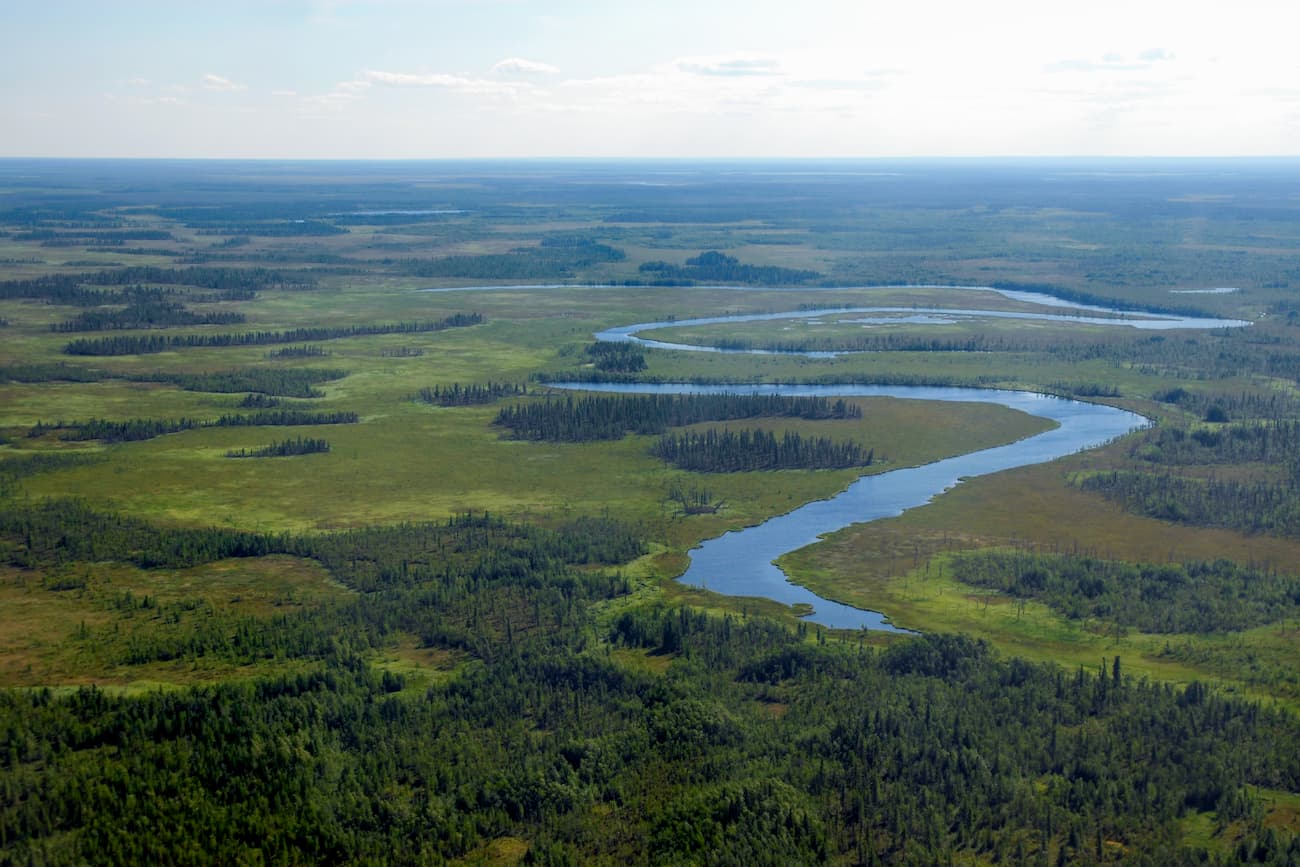
The climate is moderately continental. Winters are harsh, snowy and long, and summers are short and relatively warm. The territory is protected from the west by the Ural Mountains but its openness from the north has a significant impact on the climate formation because cold air masses from the Arctic freely penetrate the area. The flat character of the terrain with a large number of rivers, lakes and swamps also has its impact. Most of the precipitation falls during the warm seasons. But even with a small amount of precipitation, their evaporation is very low, which as a result contributes to the formation of the zone of excessive moisture throughout the Yugra. The snow cover is stable from late October to early May, its height varies from 50 to 80 cm. The region is characterized by a rapid change of weather conditions, especially in transitional seasons (autumn and spring), as well as during the day. Late spring and early autumn frosts are rather frequent and can happen even until mid-June. Average January temperatures range from -18ºC to -24ºC (0 F to -11 F) and can reach -60ºC to -62ºC (-76 F to -80 F) when the northern cold air masses break through. The average temperature in July, the warmest month of the year, ranges from +15ºC to +20ºC (+59 F to +68 F) and on very rare days can reach a maximum temperature of +36ºC (+97 F). The prevailing wind direction is north in summer and south in winter.
The weather in the mountains is quite changeable and cool even in summer. The best time to visit the region's mountains is between July and mid-August.
The Yugra of the Khanty-Mansi Autonomous Area has a huge natural resource potential. These are oil and gas deposits, forests, gold and iron ore deposits, as well as bauxites, copper, zinc, lead, niobium, tantalum, brown and hard coal deposits, rock crystal, quartz and piezo quartz, peat deposits, etc. The region has plenty of natural resources. In terms of natural gas reserves, the Yugra ranks second in the Russian Federation after the Yamalo-Nenets Autonomous District .
The industry is dominated by oil and gas production, power generation and processing industries, including woodworking except for pulp and paper production.

The Khanty-Mansi area has very developed tourism of all kinds. There is a modern infrastructure for cultural exploration as well as for active recreation.
Fans of sports and eco-friendly tourism will be able to conquer majestic mountains and raft down picturesque rivers, enjoy the beauty of nature in nature reserves and natural parks. The hills and mountains of this area open up endless opportunities for skiing and snowboarding.
The mountainous part of the Subpolar Urals located on the territory of the Khanty-Mansi Autonomous Area is very beautiful. The highest peaks of the Ural Mountains are situated here.
Being the highest point of the whole Urals, Mount Narodnaya (1,895 m), also known as Naroda and Poenurr and translated as People's Mountain is territorially situated in the Subpolar Urals, on the border of the Yugra Area and the Komi Republic . It is the highest point in European Russia outside the Caucasus. This leads to its large topographic prominence of 1,772 metres (5,814 ft).
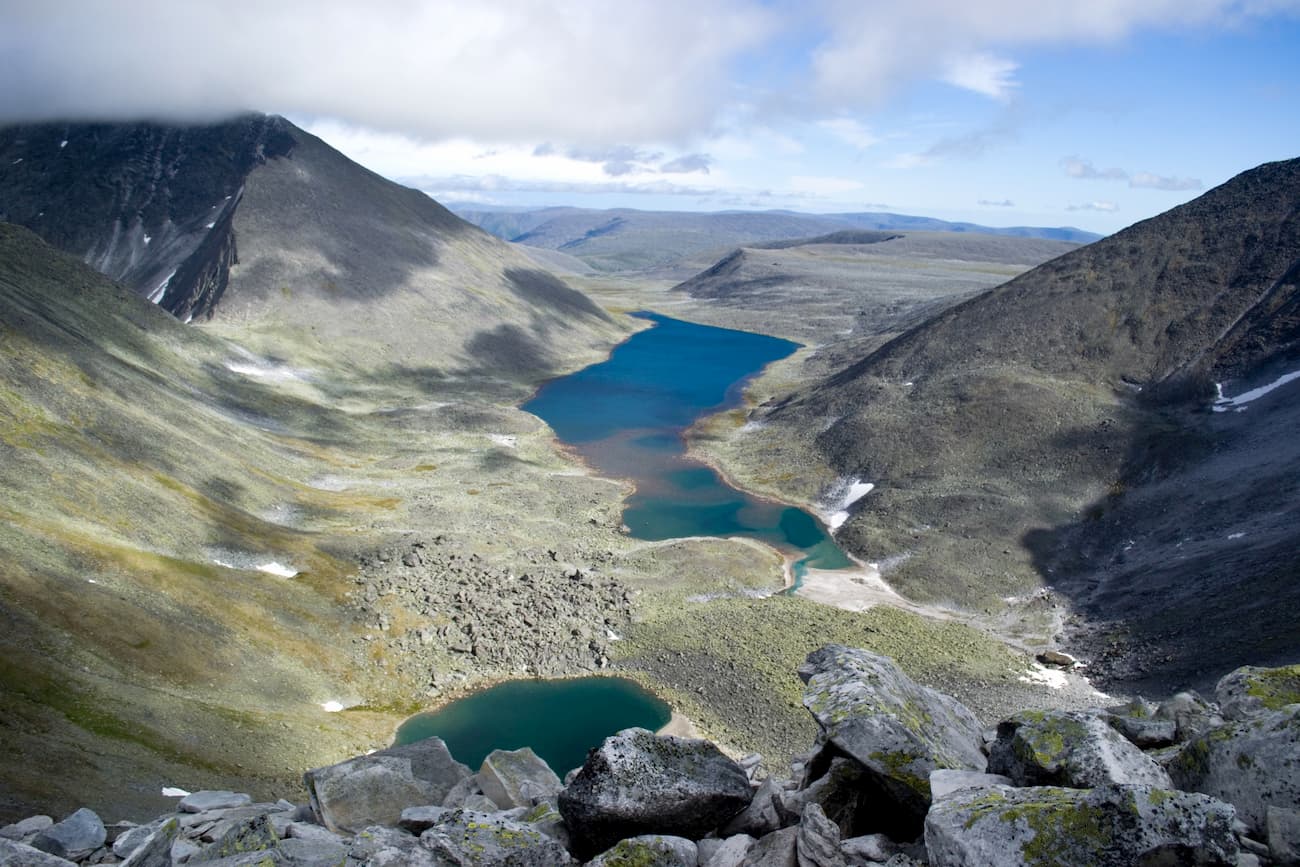
The top of the mountain is half a kilometre from the border towards Yugra. As for the name of the mountain, scientists could not come to a common opinion for a long time, so there are two versions. According to one version, in the Soviet years, an expedition of pioneers gave the mountain a name in honour of the Soviet people - Narodnaya (the stress is on the second syllable). According to the other version, even before the arrival of the first Soviet tourists, the peak was named after the River Naroda (the stress is on the first syllable) flowing at the foot of the mountain. The Nenets peoples called the River Naroda Naro, which means a thicket or a dense forest, and the Mansi peoples called it Poengurr or Poen-urr, which translates as the top, or head. The maps used to refer to it as Mount Naroda or Mount Naroda-Iz. Nowadays, it appears everywhere as Narodnaya.
In the 1980s, someone set a bust of Lenin on the top of the mountain. Its remains can be found there to this day. There is one more symbolic relic there – some Orthodox believers erected a worship cross on top of Mount Narodnaya after a Procession of the Cross.
The slopes of the mountain are steeper in the north-east and south-west and there are many steep rocks on them. The south-eastern and northern parts of the mountain are more gentle but they are also covered with scree. Be vigilant and careful when climbing! On the slopes of the mountain, there are many not only boulders but also caverns filled with clear water as well as ice. There are glaciers and snowfields. From the north-eastern part of the mountain, you can observe Lake Blue near which tourists and travellers like to make bivouacs.
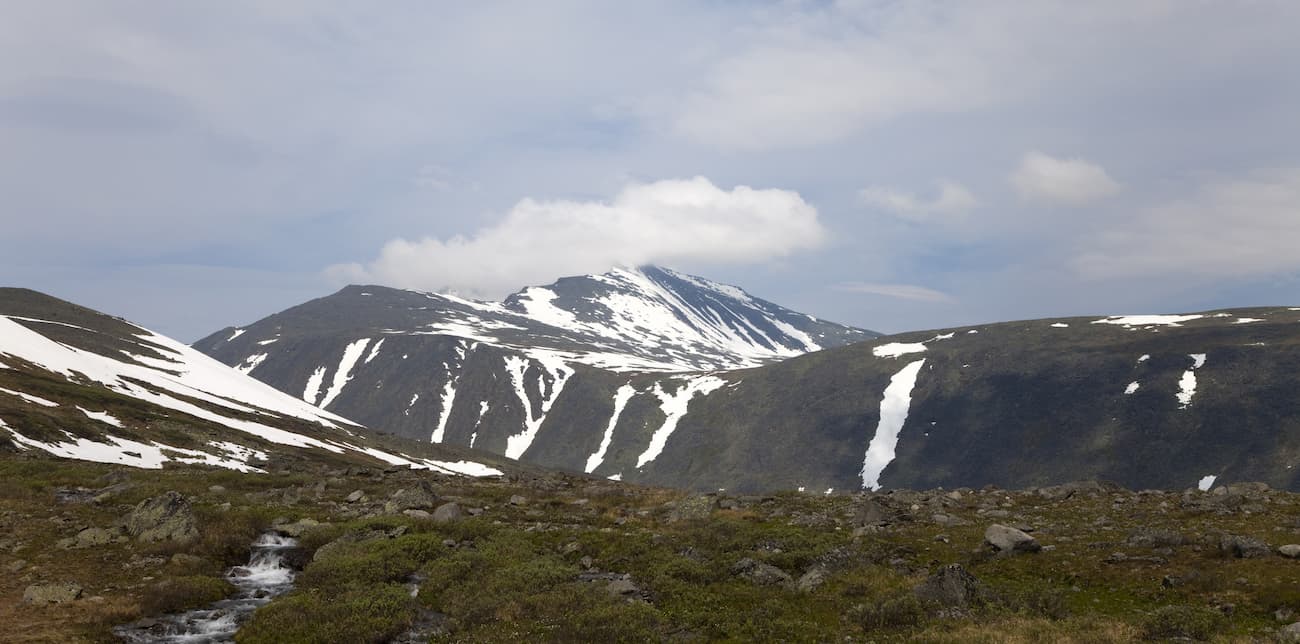
Mesmerizing with its beauty and inaccessibility, it attracts many tourists and fans of active recreation. This majestic mountain is quite remote from the settlements, so getting to it is not an easy task. The mountain is located in the Yugyd Va National Park , so it is necessary to register in advance and get a visit permit from the park administration. How to get to the park administration and get a permit, read the article on the Yugyd Va National Park .
Mountain Zaschita (1,808 m) is the second-highest peak in the Ural Mountains, after Mount Narodnaya . Mysteriously, the name of the mountain, which roughly translates as Defense or Protection Mount, does not correlate in any way with the Mansi names of the nearby mountains and rivers. The origin of the name is unknown. There are some speculations but we will consider just one of them. On the map of the Northern Urals which was made by the Hungarian researcher Reguli the closest peak to Mount Narodnaya was called gnetying olu. Its location coincides with that of the present-day Mount Zaschita . The name gnetying olu in the Mansi can be deciphered as a mountain on which there is some help from ice. The mountain is believed to protect deer grazing on glaciers from mosquitoes. So, early topographers called the mountain more briefly – Mount Defense. Indeed, the slopes of this mountain are covered with a lot of snow and glaciers (the Yugra, Naroda, Kosyu, Hobyu glaciers and others). And it is here that the Mansi shepherds bring their deer which can rest on glaciers and snow. Summarizing all the above, we can say that Zaschita Mount is to some extent protection for deer from mosquitoes. The very name Zaschita appeared on maps with the beginning of hiking tours in the Subpolar Urals.
Mount Neroyka (1,645 m) is 100 km from Neroyka village, the closest tourist base to this peak. In the 1950s, people who were engaged in quartz mining near the mountain worked and lived in this base. Later, a gravel road was built from the village of Saranpaul to the mountain for large-scale development of the quartz deposit. In recent years, the road has not been much used and is practically not cleaned from snow in winter. There has been a plant built 20 km down from the mountain for primary processing of quartz with the use of nanotechnologies. There is an annual big camping event near the mountain. It is organized by the Tourism Department of the Khanty-Mansi Autonomous Area. You can have a 1-hour helicopter ride to the mountain from the village of Saranpaul. Should you wish to fly from the city of Khanty-Mansiysk , be prepared to fly over the taiga for 2.5-3 hours.
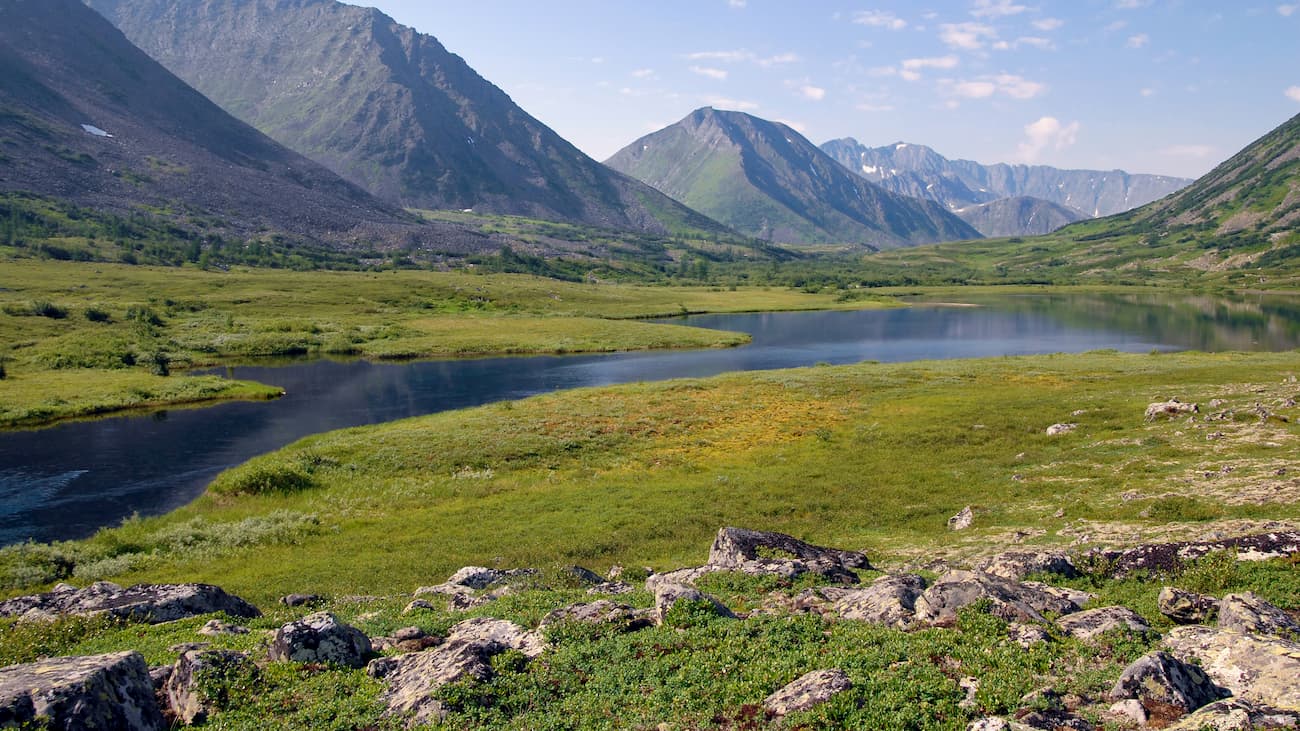
Quite inquisitive tourists happened to discover, by a lucky chance, a Pyramid similar to that of Cheops but four times bigger. It is located on the territory of the Narodo-Ityinsky Ridge. The closest to the pyramid is the village of Saranpaul. The sizes of the found pyramid are as follows: the height is 774 m, in comparison to the Egyptian pyramid which is 147 m; the length of a lateral edge is 230 m whereas the Egyptian pyramid is 1 km. The pyramid is located precisely according to the cardinal directions, there is not a single degree deviation at that. The origin of the pyramid is unknown, scientists are still making assumptions. No traces of human activity were found near the pyramid. The only way to get here at this time is by helicopter.
Samarovskaya Mountain is another wonder that is baffling many people. It is dividing the city of Khanty-Mansiysk into northern and southern parts. Few now living residents know that in the old days the highest part of the modern city used to bear a plural name of the Samarovsky Mountains among which there were Mount Palenina, Komissarskaya, Miroslavskaya, Filinova, and Romanova. Originally, there was a village called Samarovo amidst these mountains. Until now, many issues bewilder both residents and scientists. How could a mountain form in the middle of the West Siberian Plain? What is inside it? Won't the weight of the buildings erected on the top of the mountain affect its height? The uniqueness of Samarovskaya Mountain is that it consists of numerous large stones, boulders, rocks that are absolutely foreign to this area. Scientists have not yet come to a consensus on the mountain’s origin.
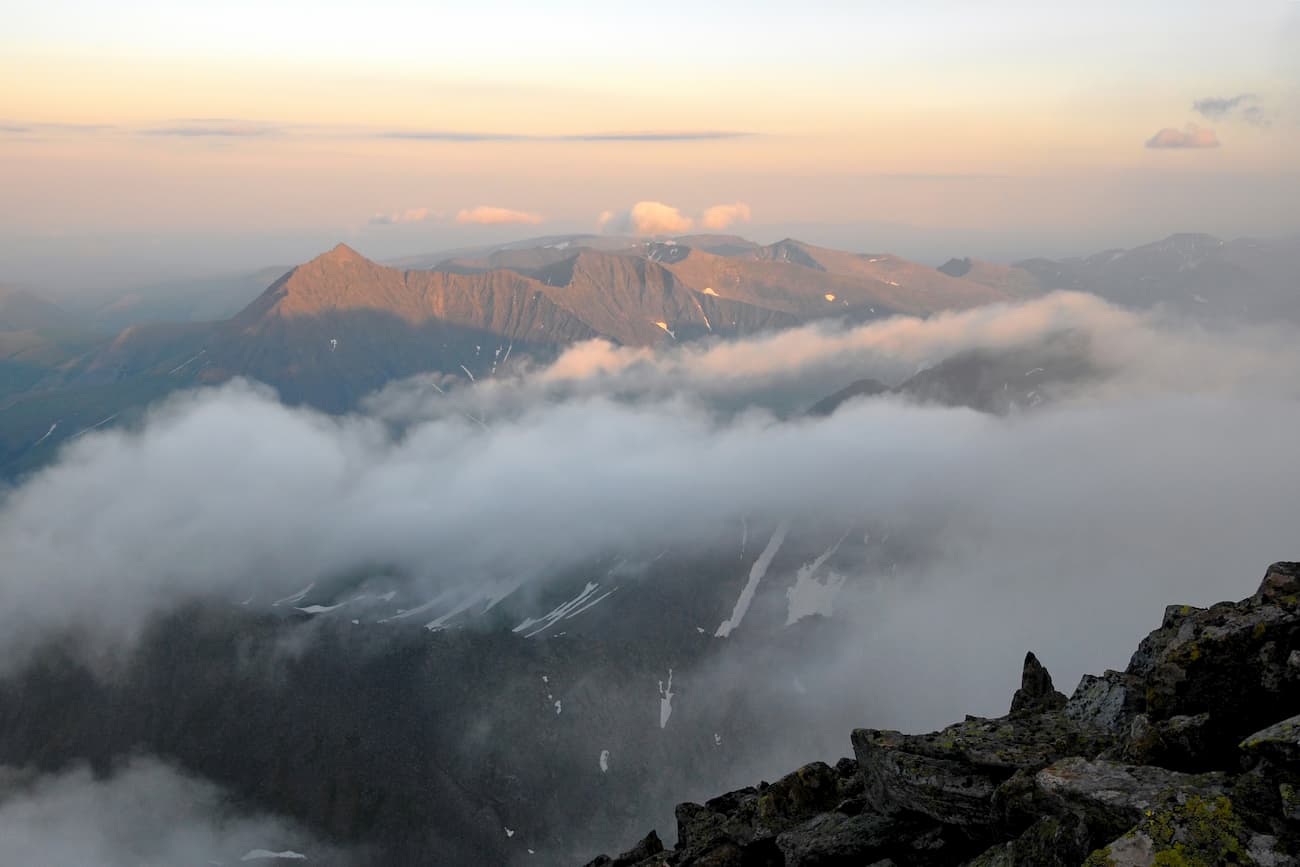
The Yugra is very famous for its ski resorts, the main of which are:
- The Cedar Ravine ski resort (Surgut city, Naberezhny Ave. 39/1)
- Three Mountains (Trekhgorie) ski resort (30 km from Nizhnevartovsk, Ermakovsky settlement)
- Stone Cape (Kamenniy Mys) ski resort (near the city of Surgut)
- Pine Urman ski resort ( Khanty-Mansiysk , Sportivnaya Str., 24)
The far-away lands of the Yugra are the blessed sanctuaries for many animals as the area is rather hostile to a human There are reserves, natural parks, wildlife sanctuaries here that aim to protect the national treasures of the lands. Having visited these regions once, you would crave for coming back again and again to feel that unique sense of unity with nature, to forget about the urban fuss and and hustles whatsoever. The harsh but beautiful nature of this extraordinary area leaves an indelible trace in the soul of every person.
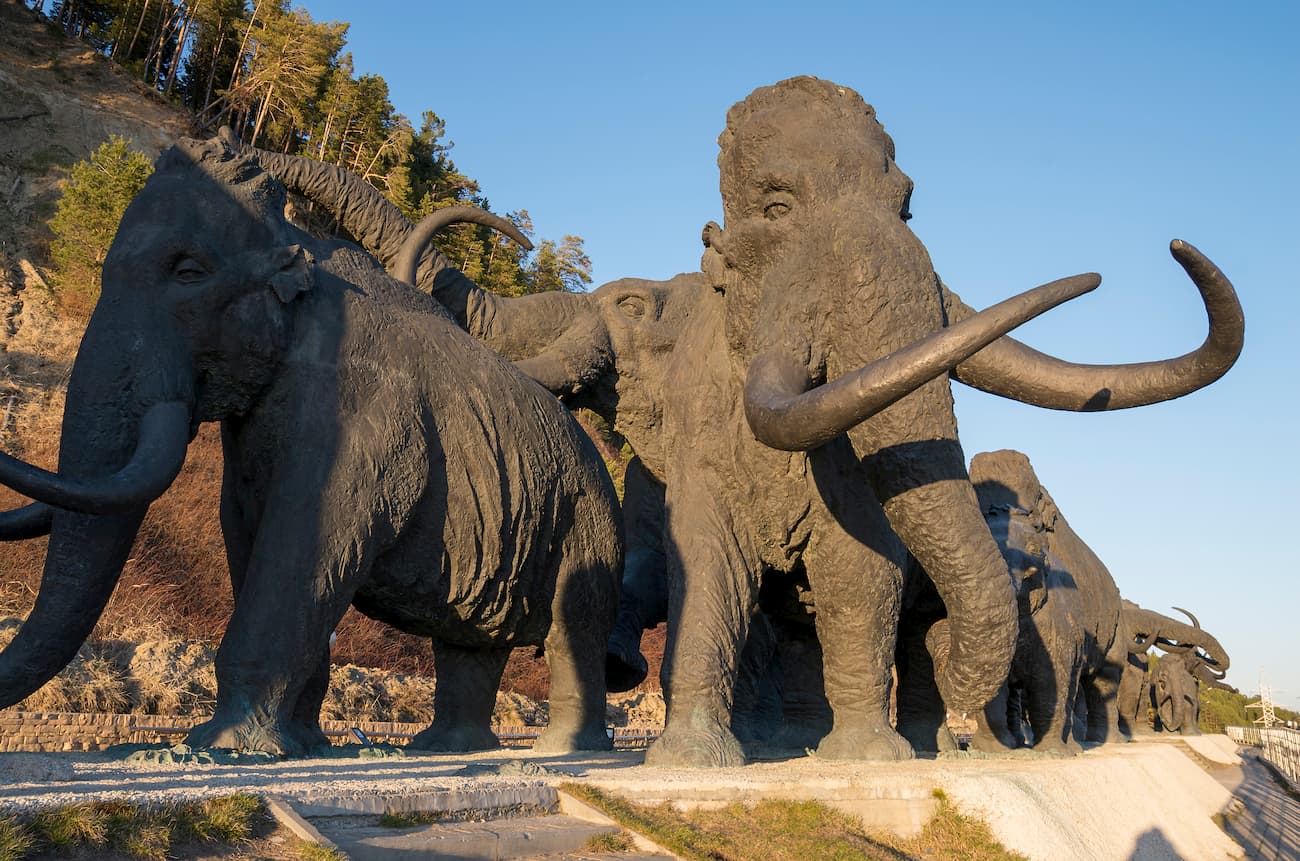
On the territory of the district there are 25 specially protected natural areas, the most famous of them are:
- The reserves are two: the Malaya Sosva Reserve and the Yugan Reserve, the latter was established in 1982 as the largest reserve of taiga landscapes. The purpose of the reserves was to study unobtrusively and carefully preserve the endemic flora and fauna without disturbing natural processes. Hunting and economic activities are prohibited here, which is important for the preservation of natural ecosystems.
- The natural parks are the Samarovsky Chugas Nature Park, the Siberian Sloping Hills (Uvaly), the Numto (also called Lake Numto), and the Kondinskie Lakes.
These reserves and natural parks offer tourists their own excursion programs to make visiting their territory much more enjoyable and educational.
The Samarovsky Chugas Nature Park is located in the center of Khanty-Mansiysk , on a small hill between the Ob and Irtysh rivers.
The territory of the Siberian Sloping Hills (Uvaly) natural park is 350 km away from the city of Khanty-Mansiysk . You can get there by helicopter or by plane. The office of the park is located at 7a Pionerskaya Street, Nizhnevartovsk.
The Kondinskie Lakes Natural Park is located 380 km from Khanty-Mansiysk . Half of the park is covered with swamps, but there is also a recreational area. There you can rest, swim, do some amateur fishing, picking berries (cowberries, cranberries) and mushrooms is permitted. There is only one independent walking route here, it runs for 3 km in the deep forest. It is a cool place for kids since the park is equipped with sports grounds, a pool and a small zoo where the kids can interact with brown bear cubs. What else, try the TaiPark, it is a rope course running at the height of 2.5 meters, having 15 stages, the full length is 125 meters. There is an opportunity to order water walking tours in the town of Sovetsky, which can be reached by train from Khanty-Mansiysk .
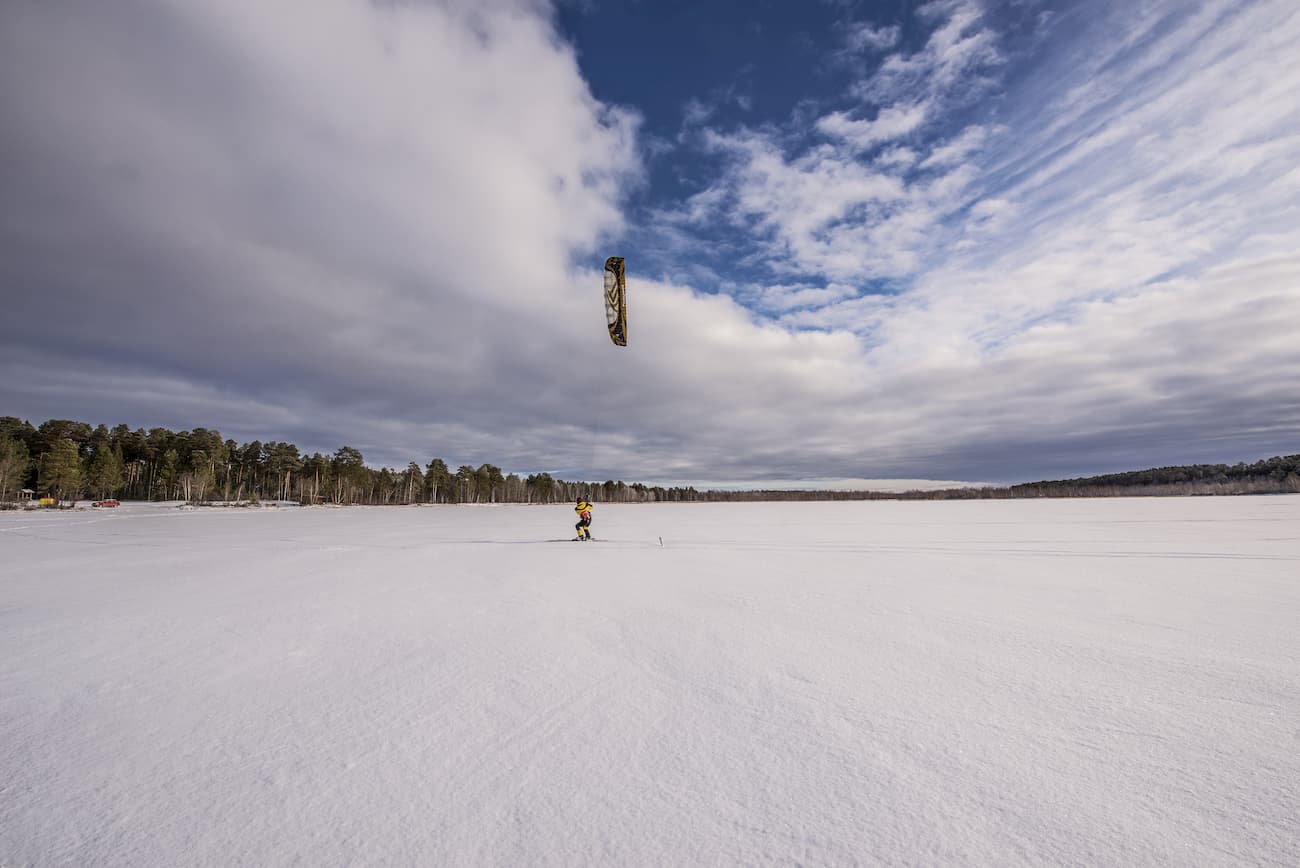
The Numto Nature Park is located almost in the center of the West Siberian Plain, in the Beloyarsk district of the Khanty-Mansi Autonomous Area, 300 km from the city of Surgut and 200 km from the town of Beloyarsk. It is located on the border of Yugra and Yamalo-Nenets Autonomous Area. The administration of the park is located at 2, Beloyarsky micro-district, 4a. The territory of the natural park is a treasure trove of archaeological and ethnocultural monuments. As of today, there have been discovered 20 architectural monuments, including fortified and not fortified settlements, places of worship abandoned by the peoples who lived here from the Stone Age to almost the present day. Researchers have also found 65 monuments of ethnic value, the main of which are worship objects, sacred places and cemeteries.
The Malaya Sosva Reserve includes several subordinated territories and sanctuaries, including Lake Ranghe-Tour. The reserve offers a 4-km walking guided route that gets the visitors introduced to the typical features and characteristics of flora and fauna of the region. The route is called Bear Trail and you can spot bears there (don’t come close though, we’ve already written how to behave if you meet a bear in the wild). Also, you will see the River Malaya Sosva, some marshes, ancient cultural monuments and other nice sights. Permission to visit the reserve can be obtained from the administration of the reserve at Lenina Str. 46, town Sovetskiy.
As to the Yugan Nature Reserve , it is inaccessible to common hikers who are afraid of flying since there are no roads to it. The only way to get there is taking a helicopter ride. You also must obtain a permit in the administration of the reserve, go accompanied by employees of the reserve, and only on special transport of the reserve (motorboat, snowmobile). The central manor of the Reserve and the administration are located in the village of Ugut. To get to this village, you should first go to the town of Surgut, then go to the town of Pyt-Yakh, and from it there is a road to the village of Ugut. It is about 100 km from Ugut to the southern border of the reserve i, and another 25 km to the nearest cordon. The administration works from Monday to Friday. You can request a permit via mail at [email protected] , order a guided tour at [email protected]
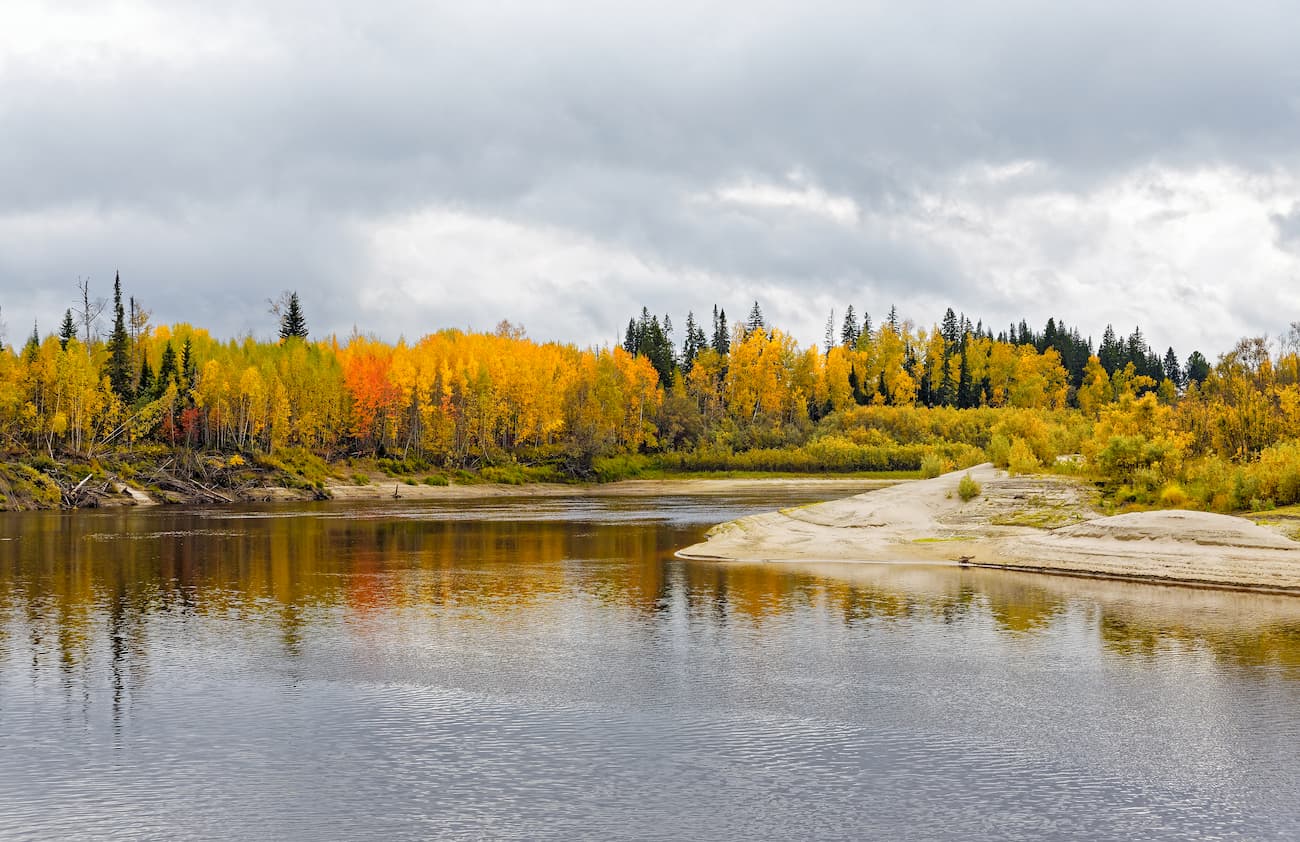
The Yugra lands are heaven for water sports aficionados. They can have some awesome fishing or go rafting along such rivers as: the river Naroda, the Deep Sabun, etc.
The Naroda River is 140 km long. It is the left tributary of the Manya River located in the Ob River basin. The river has its origin on the south-western slope of Mount Narodnaya . It is a mountain-taiga river with rapids, swifts, numerous rolls, which attracts interest among water tourists. However, it is usually not rafted very often.
The Deep Sabun River flows through the territory of the Siberian Sloping Hills Nature Park. The park has developed multi-day water routes. It is possible to raft along the river in summer and to go skiing along it in winter.
The Kondinskie Lakes are a system of lakes along the left bank of the Konda River. The largest lake is the Arantur, with pine forests on the northern side and sandy beaches well equipped for a nice relaxing me-time. The water heats up well in summer. The small river Okunevaya and the river Maly Akh flow into the lake. The Maly Akh comes in on the west side and connects lake Arantur with Lake Pon-Tour. This lake is the richest in fish, and there is also a parking lot for fishermen here. The streams connect Pon-Tour with small lakes Krugloe and Lopukhovoye. When you look at Lopukhovoe lake, you feel as if you have found yourself in a fabulous place: more than half of its surface is covered with white lilies, as well as yellow flowers of the water-beans. Then the river Big Akh, which flows into the river Konda, connects all the lakes into a single system. Along the river there are many archeological monuments such as forts and settlements which have paths to them. The southernmost lake of the park is Ranghe-Tour.
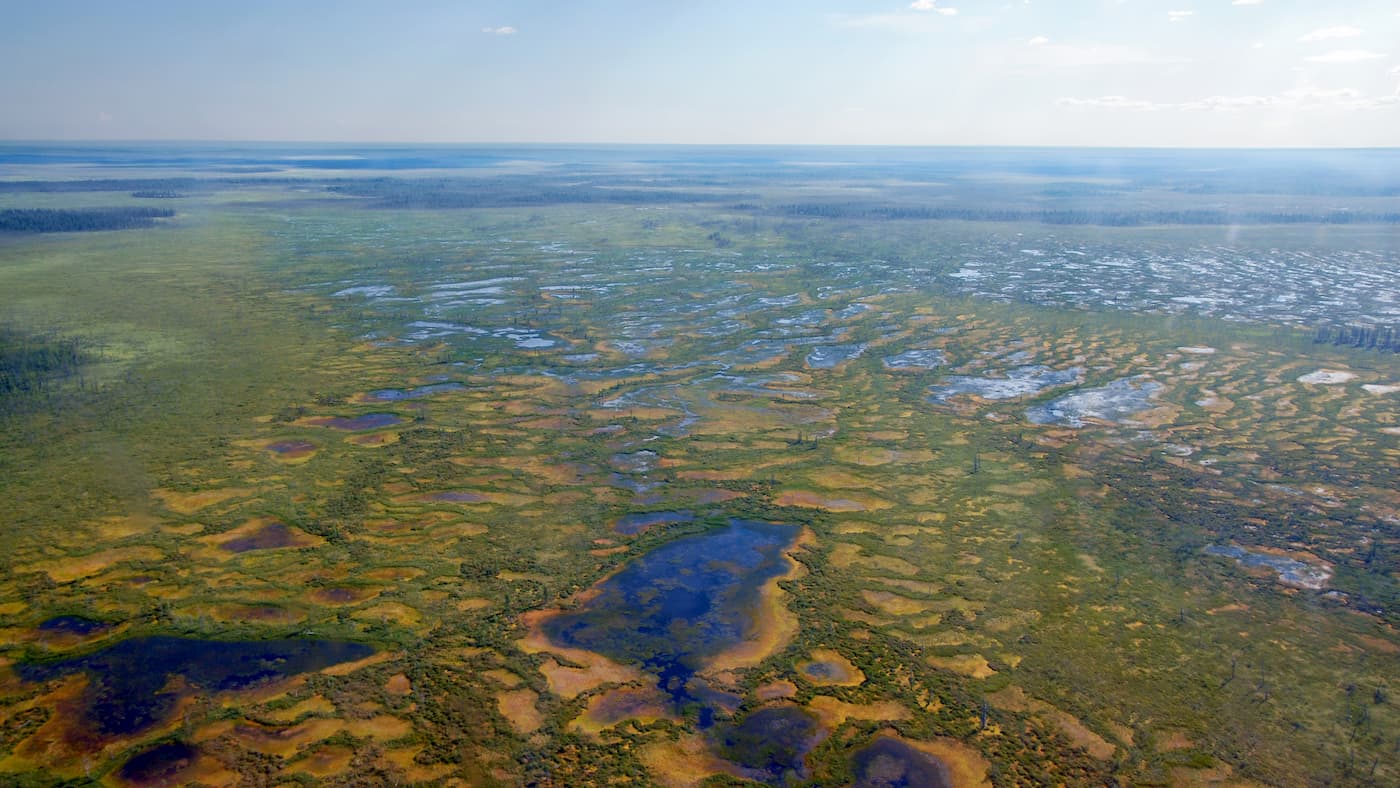
Yugra is not the easiest destination and not the most accessible, but the effort is well worth it. You should first get to the capital of Khanty-Mansiysk Autonomous Area – the city of Khanty-Mansiysk either by air or by train.
Khanty-Mansiysk is based on the premises of the former village Samarovo founded in 1582. It used to be the territory of the Khanty people and a pit stop for coachmen who rode their wagons across the country. The village was founded by Russian Count Samara, thus the name Samarovo. The modern city actually began to develop in 1930 because amidst the Siberian taiga there finally started to appear stone houses on the high bank of the Irtysh River. In 1940, the village was renamed into Khanty-Mansiysk by the name of the peoples living on this territory – the Khanty and the Mansi, and in 1950 it received the status of a town.
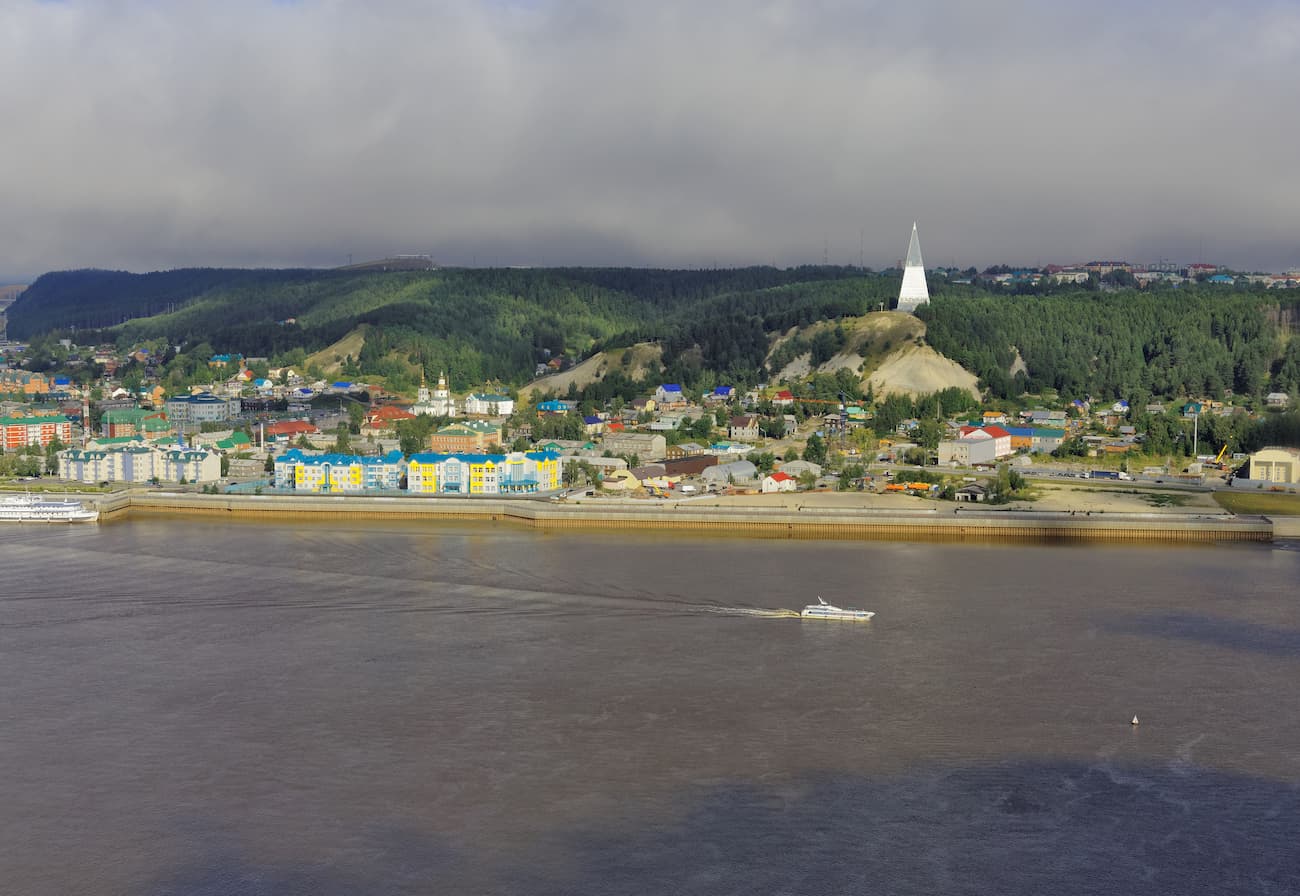
The city has several attractions. Mount Samarovskaya is probably the biggest natural and scientific wonder. It divides the city in two parts and causes many concerns for urban developers who always wonder whether this mountain can move making the buildings slide or even sink in.
Another beauty is the century-old cedar grove that is within the city limits. The grove is a part of the natural park Samarovsky Chugas. The word chugas in the language of the Khanty means a lonely hill in the low river floodplain.

The park is one of the main attractions of the city, it hosts an open-air ethnographic museum called the Torum Maa, a cultural and tourist complex called Archaeopark, a biathlon center. Kids and adults, nature lovers and fans of culture love this place dearly.
A memorial sign to Yugra's discoverers is installed on top of the Samarovsky Chugas. It is a tall stele pyramid divided into three portions. On the lower level, there is a restaurant, on the second level is a small museum, and on the third level there is an observation deck, 40 m above the ground, with a magnificent view of the Irtysh River and the river port. The pyramid is decorated by the bas-relief depicting the discoverers of the region, from the 16th-century Count Samara to the geologists of the 20th century.
Another trademark of Khanty-Mansiysk is the State Museum of Nature and Man. The museum hosts a gallery and a workshop of a famous artist G. Rayshev.
The city has a lot of small monuments generously spread around the city. There is the Khanty family resting on a camp, this monument is near the airport building. You can take a pic at the Golden Tambourine located at the intersection of Gagarin Street and Mira Street. Connoisseurs of culture should also visit the Sun – the Theatre of Ob-Ugrian Peoples, it is the world's first professional theatre of Khanty and Mansi peoples. And if you are travelling with kids, the Khanty-Mansiysk Puppet Theatre is a must-visit. In the period from May to October, you can take a boat ride to the confluence of two rivers – the Ob and the Irtysh. Yugra Service Co. operates such cruises, you can find more information locally at their address Tobolsk Trakt street 4, Khanty-Mansiysk .
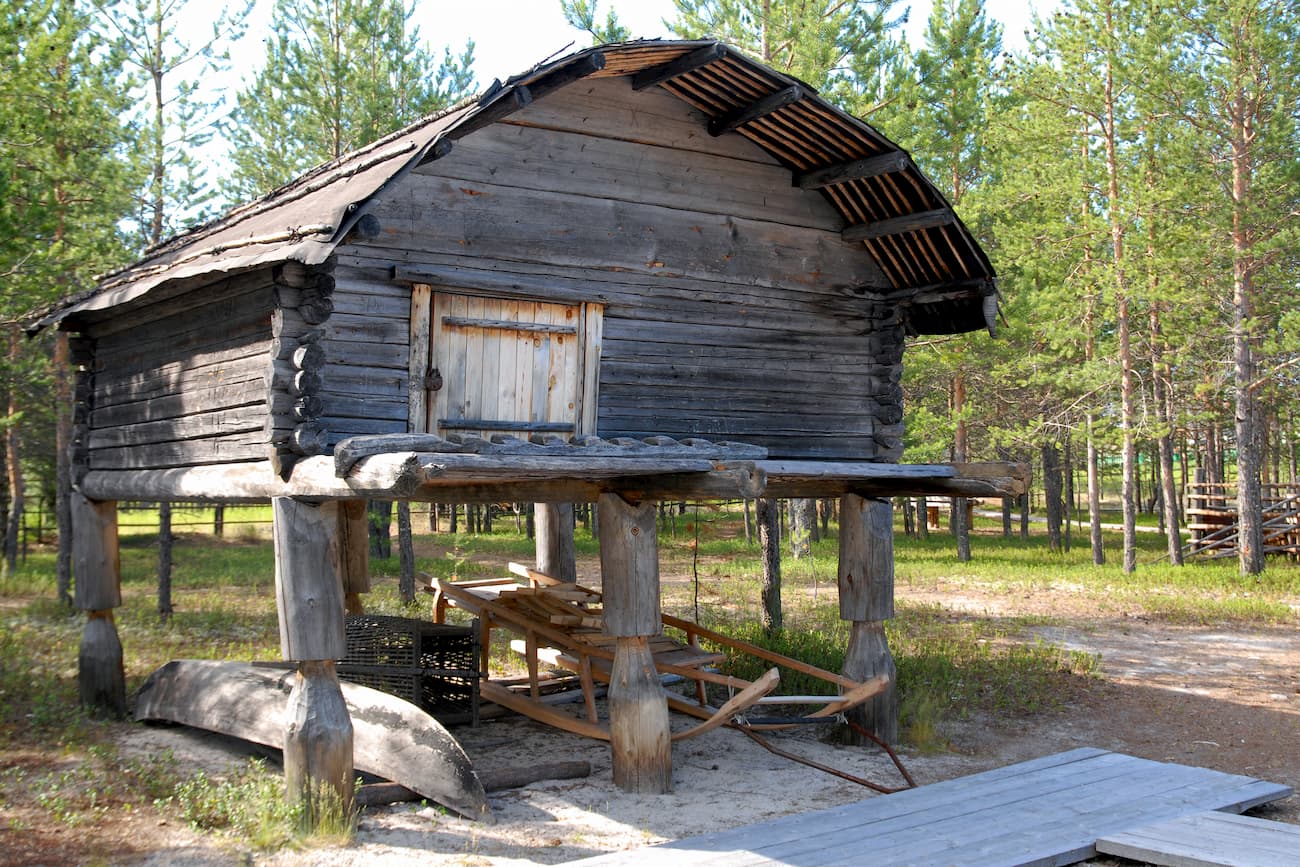
Explore Khanty-Mansiysk Autonomous Okrug – Ugra with the PeakVisor 3D Map and identify its summits .

PeakVisor Hiking Maps
Be a superhero of outdoor navigation with state-of-the-art 3D maps and mountain identification in the palm of your hand!
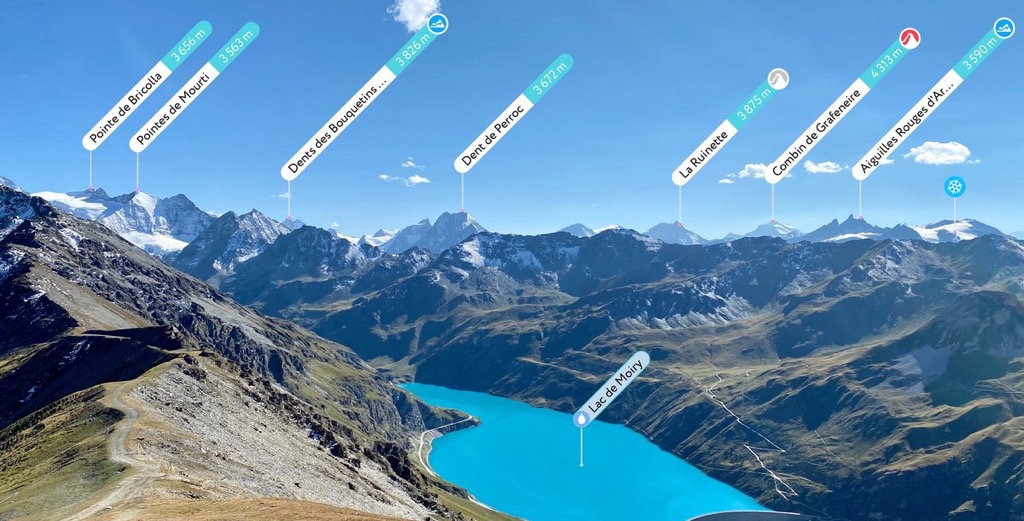
- Places - European, Western and Northern Russia
KHANTY-MANSI AUTONOMOUS OKRUG: RUSSIA’S MAIN OIL-PRODUCING REGION
Khanty-mansi autonomous okrug.
Khanty-Mansi Autonomous Okrug is usually called Yugra or Ugra for short. It is named after two indigenous groups native to the region — the Khanty and the Mansi, known collectively as Ob-Ugric people. It covers 534,800 square kilometers (206,500 square miles), is home to about 1.53 million people and has a population density of 2.9 people per square kilometer. About 91.5 percent of the population live in urban areas. Khanty-Mansiysk is the capital, with about 80,000 people. The largest cities are Surgut, Nizhnevartovsk, and Nefteyugansk.
As of the early 2010s, about 51 percent of the oil produced in Russia and 7.3 percent of the world’s supply came from Khanty–Mansi Autonomous Okrug, making the region very important economically. More than 10 billion tons of oil has been was recovered from the okrug’s fields so far . The okrug contains around 70 percent of Russia’s developed oil fields, about 450 in total, including Samotlor, which is the largest oil field in Russia and the sixth largest in the world. Gas was first found in the region in 1953 and oil began to be produced in 1960.
As far as tourism is concerned this autonomous okrug combines unique historical, cultural and natural resources, the most important of which is the way of life of its indigenous peoples. If you visit a nomad camp, you can ride on a reindeer sleigh, live in a chum tent, learn to harness a deer, ride a sled and taste stroganina (slices of frozen meat) and patanka (thinly sliced frozen fish). In the Sub-Arctic Ural Mountains, it is popular to climb Mount Narodnaya — the highest peak of the Urals — and go fishing.
The winter in Khanty-Mansiysk is cold. Snow lies on the ground about 200 days of the year and temperature of -50 degrees, C are not unusual. The summer are short but sometimes can get surprisingly hot, with temperature over 30 degree heat. The best time to visit is May or or September, when it is not yet cold and the annoying mosquitos, no-see-ums and midges are not out in full force.
Getting There: By Plane: The flight Moscow or St. Petersburg to Khanty-Mansiysk is about three hours. To Surgut, three and a half. To Nizhnevartovsk, four hours. The cost of an adult round-trip economy class ticket is from 8,000 to 12,000 rubles, depending on the airline. The airport of Nizhnevartovsk. Website: /nvavia.ru. Phone +7 (3466) 49-21-75. By Train: you can reach Surgut, Nizhnevartovsk, Yugorsk, Nyagan and Kogalym. Trains do not reach Khanty-Mansiysk. The nearest station to it, Demyanka, is located 240 kilometers away. From it to the capital of Ugra there are minibuses. A round-trip ticket for a berth in a compartment from Moscow to Surgut is 14,000 rubles. The trip takes two days.
By Car: Two roads lead to Yugra. The main one is the Federal highway R404 Tyumen-Khanty-Mansiysk. This is convenient if you are going to the eastern part of the okrug. If you need to go to the western part or to the capital, it is better to go by the Northern route — through Perm, Serov, Ivdel and Yugorsk. The road quality on both routes is pretty good, but there is much less traffic on the northern one. If you are traveling in Ugra by car, do not forget to refueling. The distances gas stations can reach 200 kilometers or more. It is a good idea to have a canister of fuel in the trunk just in case. Regional Transport By Bus: From Khanty-Mansiysk to Surgut is 300 kilometers, Bus tickets range from 1100 to 1400 rubles. From Surgut to Nizhnevartovsk — 220 kilometers — bu bus costs about 1000 rubles. From Surgut to Kogalym — 80 kilometers — is about 500 rubles. The bus station in Nizhnevartovsk. Website: www.nvav.ru. Phone: 8 (3466) 45-72-97.
Accommodation in the Region: In all major cities there are a lot of hotels. The level of service is high everywhere, but the prices are also high: starting from 5,000-6,000 rubles for a standard price double room. It is much cheaper to rent apartments, at 1,500 to 2,500 rubles.
Khanty and Mansi
The Khanty (pronounced HANT-ee) are a group of Finno-Ugric-speaking, semi-nomadic reindeer herders. Also known as Ostyaks, Asiakh, and Hante they are related to the Mansi, another group of Finno-Ugric-speaking reindeer herders. Only about 60 percent of Khanty speak their native language and a much smaller percentage live in the forest. In the Khanty-Mansiisk District they are fa r outnumbered by other ethnic groups. [Source: John Ross, Smithsonian; Alexander Milovsky, Natural History, December, 1993]
There are about 23,000 Khanty. They live primarily in Khanty-Mansi Autonomous Okrug , a region along the northern tributaries of the Ob River in northwestern Siberia about 1,100 miles northwest of Moscow and 200 mile south of the Arctic Circle. Their cousins, the Mansi, also live there. The region has been damaged by oil and natural gas exploration and production.
The Mansi, known in the old days as the Voguls, are close relatives of the Khanty and live primarily in Khanty-Mansi Autonomous Okrug.. There are around 8,000 or so Mansi. The Mansi have traditionally survived by fishing, hunting and gathering, The hunting methods they employed and the animals they went after was determined by what was available. Often they relied chiefly on fishing and dried enough fish during the summer to last through the winter. They hunted elk, bears, wild reindeer with spears, bows and arrows and traps until the 19th century when the began using firearms. Elk were caught with a system of traps and triggered bows.
Many Mansi still hunt. They use dogs and firearms and go chiefly after muskrats and squirrels. Sable are hunted with nets and guns by a pair of hunters: one who flushes the sable from its den into the net and the other who shoots the animal. Their traditional religion is often aimed at securing a successful hunt.
KHANTY factsanddetails.com ;
Oil and Natural Gas in Khanty-Mansi Autonomous Okrug
Oil was prospected in the West Siberia from the beginning of the 20th century. Local people reported finding discharges on the surface from time to time. The first Soviet prospectors arrived to Ugra in 1935. They confirmed the presence of natural oil seeps on the Ugan river in the Surgut area. Over 2.5 tons of equipment were delivered to the drilling pad by air. Other supplies were hauled by horses, since the nearest railroad ran about 1,000 km away from the prospecting site. The place was very remote and was only accessible during the winter. The early workers lived in a camp under extremely cold conditions. [Source: Technologies Department of Ugra]
In 1953, natural gas was found for the first time in Western Siberia, in Berezovo, about 300 kilometers northwest of Khanty-Mansiysk. in Berezovo. In 1960 the first oil was found in the vicinity of Shaim. Soon after oil fields were discovered in Megion, West Surgut, Pokur, Vatinsky, Mamontovo, Salym, Pravdino and other places. The biggest discovery was in 1965, when the first oil gushed out from the marshland at Samotlor. One of the largest oil fields in the world, it has already produced 2.67 billion tons of oil.
Oil quality in the region is quite high. Some is light, some is black, but most of it is brown. Its characteristics and composition can differ significantly even within the same field. In 2013 255.1 million tons of oil were produced in Khanty-Mansi Autonomous Okrug and eight new fields were brought into development. Total gas production in Ugra was 33,0 billion cubic meters in 2013. This was mostly associated petroleum gas.
Owing to its explored and proven raw hydrocarbons resources, production capabilities, industrial infrastructure and oil fields commercial viability Yugra will remain Russia’s main strategic raw hydrocarbons resource base for the next several decades. Over 475 oil and gas fields have been discovered in the territory of the Khanty-Mansiysk Autonomous Okrug. Total length of the region's pipelines network is 107,000 kilometers.
Ob River (flowing northeast of Novosibirsk and Tomsk) is the forth longest river in the world if you include its major tributary the Irtysh River and the seventh longest without it. The westernmost of three great rivers of Asiatic Russia, the Ob is 3,650 kilometers (2,270 miles) long and is an important commercial waterway that transports goods back and forth between the Trans-Siberian Railway and the resource rich regions of northern Siberia. Since it is frozen over half the year activity on the river is concentrated mostly in the summer months. The Ob-Irtysh is over 5570 kilometers (3461 miles) long
The Ob and the Irtysh River begin in the Altay Mountains, a range located near where Russia, China, Kazakhstan and Mongolia all come together, and flow northward. Although the Ob and the Irtysh begin at points within a couple of hundred miles of one another the two rivers don't join until the Irytysh has traveled over 1,600 kilometers (1000 miles). Once the two rivers have dropped down out of the highlands the meander lazily through open steppes, then rich farmland, and meet in flat, swampy plains, where the width of river ranges between a half a kilometer and a kilometer and a half. The Ob then passes through fir and spruce forests of West Siberia, then through Arctic tundra before finally emptying into the Kara Sea, an arm of the Arctic Ocean. The Ob is one of the great Asiatic Russian rivers (the Yenisei and the Lena are the other two). According to the Guinness Book of World Records, it has the longest estuary (550 miles long and up to 50 miles wide) and is widest river that freezes solid. The mouth of the river on the Arctic Ocean is ice free only a couple of months a year. Huge flood sometimes form in the spring when high waters fed by melting snow and ice meet still frozen section of the river.
The main city on the Ob is Novosibirsk. Parts of the Ob are very polluted and nearly void of life. At the mouth of the river so much land has been degraded by gas exploration that huge chunks of permafrost land have literally melted into the sea. [Source: Robert Paul Jordan, National Geographic, February 1978, ♬]
Traveling on the Ob and Irtysh Rivers
There is a regualr ferry the Ob and Irtysh Rivers that travels between Omsk – Tobolsk – Khanty-Mansiysk – Berezovo and Salekhard (Yamal Nenets Autonomous Region). Omsk and Tobolsk both have train stations on the Trans-Siberian Railway. Khanti-Mansiysk is accessible by bus from Tyumen, which has a train station. After Khanti-Mansiysk you are beyond the road network. As well as the major stops listed on the route above, the boat also stops at plenty of isolated indigenous villages in between them. Salekhard is the only city in the world located exactly on the Arctic Circle.
The name of the ferry is the Rodina. It travels three times a month in June and September and four times a month in July and August. Going from Salekhard to Omsk: Day 1): departs Salekhard at 5:00pm; Dat 2) stops at Berezovo for 30 minutes ay 7:30pm; Day 3) stops at Oktobraskaya Market for one hour. Day 4) stops at Khanty-Mansiysk for two hours at 8:00am; Day 6) one hour stop in Tobolsk at 7:30. Day 9) arrive in Omsk at 3:00pm. Traveling the other direction, with the current, takes one third less time.
On the Salekhard - Tobolsk - Omsk trip on person posted on Lonely Planet’s Thorn Tree forum in 2013: “I'll start by saying that this boat is amazingly good value for money. Here some example prices. The first is for beds in the common area, similar to platzkart on the train, the second is for a bed in a private 4-, 6-, or 8 bed cabin and the third is for a bed in a private 2 bed cabin. 1) Salekhard - Omsk (8 days): 1162 / 1437 / 3926 roubles; 2) Salekhard - Tobolsk (5 days): 774 / 969 / 2632 roubles; 3) Tobolsk - Khanty-Mansiysk (2 days): 429 / 526 / 1394 roubles. Children go half price!
“Tickets can be bought in advance at the airport in Salekhard or on the boat itself an hour before departure (it's apparently never full). Most people get off at one of the stops in the first 24 hours when going south from Salekhard, leaving only one or two people in most of the cabins for most of the route. The beds are comfortable , both longer and wider than on trains. Everything is cleaned several times a day, there's a shower, laundry, restaurant with simple but tasty meals and alcohol. Breakfast about 70 roubles, lunch and dinner 150 - 300, beer 50 - 80, wine, vodka and so on also available. Theres also a small room where films are shown starting in the afternoon and a shop selling all sorts of useful stuff such as toiletries, mugs, books.
“You can walk around on deck as much as you want or sit and read a book on the benches up there. The scenery is more or less the same all the way - endless taiga forest with absolutely no sign of civilisation. There are a few villages such as Pitlyar for which the boat is their only access to the outside world and a couple of towns where you can get off the boat and walk around - Beryozovo 24 hours after Salekhard and Khanty-Manskiysk 3 days from Salekhard. From Khanty Mansiysk there are regular buses to Tyumen on the Trans Siberian which take 8 hours. At Tobolsk the boat stops next to the stunning kremlin, the only one in Siberia.
“Anyone can freely sail the whole route between Omsk and Pitlyar, a small village of 500 and the last stop before Salekhard. Salekhard and areas north are closed to outsiders, Russian or otherwise, unless they get a temporary permit. See the Yamal Peninsula link in my signature line for how to get this permit. Permit in hand, you can continue the journey north from Salekhard a further two days to Antipayuta, well beyond the Arctic Circle, with a similar level of comfort and price.
“It sails the whole route from June to September and once in October from Khanty-Mansiysk to Omsk. Check www.irsc.ru for timetables and fares. Only about half the boats from Salekhard go as far as Omsk, the rest stopping in Tobolsk. Eg in July and August, the most frequent sailing months, 6 boats go from Salekhard - Tobolsk each month but only 3 continue to Omsk. Check the timetable carefully when planning if you want to sail all the way to Omsk!”
Khanty-Mansiysk City
Khanty-Mansiysk is the capital of the Khanty-Mansiysk Autonomous Okrug and home to about 80,000 people. Despite its remote location and relatively small size, it has a Norman Foster skyscraper, world-leading medical center that is free and has hosted international film festivals, major sports events and political summits. How is this possible?: Oil wealth and close ties between local politicians and Russian President Vladimir Putin doesn’t hurt.
Khanty Mansiysk has showy headquarters for Russia’s main oil companies: Rosneft, Lukoil and Gazprom-Neft. Not far away enormous drilling towers rise and gas flares burn above the birch forests and pipelines cut through the landscape. Around 90 percent of the city’s economic revenues are tied directly to the oil and gas industries.
The city is located in a picturesque area of the West Siberian lowland, where steep hills overgrown with age-old dwarf pine, rise up from the right bank of the mighty Irtysh River. Two of the largest rivers of Siberia — the Irtysh and the Ob — merge twenty kilometers from the city. Not far from town the “Coniferous Urman” ski complex with a cable car. The cedar forest of the Samarovsky Chugas Park has trails for cross-country skiing and hiking. For children there is a water park and a small zoo in the village of Shapsha 20 kilometers from the city. In the summer, there are boat tours to the confluence of the Ob and Irtysh, where you can see the floating chapel-lighthouse.
Places of interest to tourists the gold domes of the Church of Christ’s Resurrection; the gallery of the artist Gennady Raishev; the Geology, Oil and Gas Museum, which traces the history of Western Siberian oil and gas development; and the open-air Archeopark, which has bronze sculptures of Pleistocene animals like mammoths and woolly rhinosl a sporting venue that hosts international ice and skiing events. A new triple concert hall dominates the center of the town. Servicing villages that cannot be reached by road, is an ultra-modern hospital ship that cruises Ob and Irtish rivers treating the sick on board. Complex operations are supervised by surgeons from the central hospital in Khanty-Mansiysk using TV monitors that relay pictures by satellite.
Accommodation: There are several hotels of different levels in Khanty-Mansiysk. The best service and, accordingly, the highest prices at the Ugra valley Valley Complex. At the Tarey business hotel prices start from 4800 rubles per night; at the Olympics Hotel, from 3000 rubles per night. If you want to save money, it is better to rent an apartment: a one-bedroom can be found in the area of 1500 rubles per day.
History of Khanty-Mansiysk City
The first written mention of the town of the Khanty Prince Samara, where the modern city of Khanty-Mansiysk is located, dates back to 1582. In 1637, a settlement of Russian coachmen was formed in the place of this town. It was named after the Prince Samara — Samarovsky Yam.
By the beginning of the 19th century, Samarovsky Yam turned into a large village of Samarovo and became the center of crafts and trade thanks to the favourable location on the river trade routes. In 1931, a few kilometers from the village of Samarovo, a workers settlement Ostyako-Vogulsk was built, which became the district center of the Ostyako-Vogulsk national district. The settlement began to be built up with new industrial enterprises, administrative buildings, apartment houses, public and cultural institutions. By the end of 1950s, pebble roads were laid in the settlement.
In 1940, Ostyako-Vogulsk was renamed Khanty-Mansiysk, and the district was renamed Khanty-Mansiysk, since at that time Ostyak tribes began to be called Khanty, and Voguls tribes — Mansi. In 1950, Khanty-Mansiysk received the status of a city, including Samarovo village. Since 1977, Khanty-Mansiysk has become the administrative center of the Khanty-Mansiysk Autonomous Okrug formed from the national district.
Sights in Khanty-Mansiysk
Torum Maa Open Air Museum (Ulitsa Sobyanina, 20, Khanty-Mansiysk) is located on one of the seven holy hills, in the Samarovsky Churas Nature Park, and features authentically reconstructed buildings and dwelling of indigenous peoples of the North, including a Mansi winter camp and traditional Khanty residential and household structures dating to the early-mid-19th century. You can learn more about hunting culture of the Khanty and Mansi on a special hiking trail.
At the museum you can find a 15th-17th century smithy, reconstructed using materials from archaeological excavations of Emder city; displays of idols and protectors of this land. The museum is especially active during traditional holidays of the Ob river Ugric people when Khanty and Mansi come from all over to celebrate. The most popular of these are: Tylasch pori (the Rite of Offering to the Moon), which takes place in February or March when the moon is waxing; Crow Day, which symbolizes the beginning of spring and is celebrated in April; the International Day of the World’s Indigenous Peoples, which is celebrated globally on August 9; and the main holiday for the museum staff and visitors — the anniversary of the Torum Maa Museum on October 30.
Archeopark Cultural and Tourist Complex (in Khanty-Mansiysk) covers 3.5 hectares near a rock outcropping and includes a geological monument, the Samarov Villiage Archaeological Monument (dating from the 11th-18th centuries), and a the Sculpture Park with giant bronze sculptures of mammoths and other Pleistocene-era animals and Paleolithic humans.
The park was set up where the bones of mammoths and other pre-historic animals have been found. The first large bones and tusks were found in the 19th century, when the northern region came to be called the “elephant homeland.” For local inhabitants, the archaeological findings along the river banks were not so uncommon. The bones had been in demand as a decorative material and therapeutic powder.
All the sculptures were created in cooperation with paleontologists, who made sure that the ancient inhabitants of this area look as authentic as possible. Some of the sculptures, for instance, rhinoceroses, were made in life size, while others are two to three times larger. The height of the largest sculpture in the Mammoth composition is eight meters. The sculptures are lit up at night. The little mammoth is named KoJourka. The sculpture probably has the world's only sign that prohibits mammoth climbing.
Sights Near Khanty-Mansiysk City
Floating Chapel-Beacon in Honor of Saint Nicholas (20 kilometers Khanty-Mansiysk) opened in 2013 near the confluence of two mighty Siberian rivers — the Ob and Irtysh. Blessed by Bishop Pavel of Khanty-Mansiysk and Surgut and consecrated by Kirill, Patriarch of Moscow and all Rus, it is Russia's first floating chapel-lighthouse. The chapel is eight meters high, it weighs 10 tons and is fixed on a pontoon. Below the cross crowning the chapel there is a beacon light. There are eight illuminated alcoves with icons. The chapel is not intended to hold a service inside. Only maintenance personnel looking after the power supply can moor to it.
Originally the idea of building the chapel was suggested by S. Sandulov, president of the local branch of the Association of Ports and River Transport Owners. For river transport workers the Ob-Irtysh confluence is a special place. And for the local people — Khanty and Mansi — this is a sacred area. However, for a long time there was no monument or sign to mark the place. At the confluence of the Ob and Irtysh people have traditionally made a wish by throwing a coin into the water. The water here is considered to be sacred and many tourists wash themselves with the water of the two rivers.
Silava Ethnographic Center (near Uray, 250 kilometers east of Khanty-Mansiysk) and the Ela Hoth community of indigenous peoples "was founded in 2008 to preserve features of the traditional culture and way of life on the site of the former village of New Silava. Visitors can participate in Mansi ceremonies and celebrations and Mansi cooking and engage in recreational activities such as skiing, sledding, tubing, ice sliding and riding a snowmobile "Buran" in the winter; and pick mushrooms, berries, medicinal plants and go boating in the summer. The center may difficult to get to.
Swimming is possible in the cold Konda River. You can also go hiking on eco-trails and participate in various types of fishing and children's entertainment programs. The community has assembled a small museum of household items and fishing items. You can see how fishing camps were set up and a functioning bread oven and a machine for weaving mats and try grinding flour at the mill and baking bread.
Priobskoye Field
The Priobskoye field (65 kilometers east of Khanty-Mansiysk, and 100 kilometers west of Nefteyugansk) is an oil field that occupies an area of 5,466 square kilometers (2,110 square miles. It is located along both banks of the Ob River, and is serviced by the town of
The field was discovered in 1982. The northern three-quarters of the field was controlled by YUKOS via unit Yuganskneftegaz, and began oil production in 2000. In 2004, Yuganskneftegaz was bought by Rosneft, which is now the operating company of that portion of the field. The southern quarter of the field was controlled by Sibir energy, which began a joint venture with Sibneft to develop the field, with volume production beginning in 2003. Sibneft subsequently acquired complete control of the field via a corporate maneuver to dilute Sibir's holding. Sibneft is now majority controlled by Gazprom and renamed Gazprom Neft.
In 2007, the field was producing 675,000 barrels per day: 550,000 barrels per day in the northern Rosneft area and 125,000 barrels per day in the southern Gazprom Neft area. For 2008, Rosneft reported a growth of production to 680,000 barrels per day, while Gazpromneft's share grew slightly. In 2009, Gazprom Neft produced 160,000 barrels per day in its share of the field. In September 2019, Russia’s finance ministry approved tax breaks for developing the Priobskoye oilfield, Russia’s largest, to oil giants Rosneft and Gazprom Neft, Alexei Sazano.
Surgut (300 kilometers east of Khanty-Mansiysk by road) located on the Ob River and is one of the few cities in Russia that has a larger population than the capital of its federal subject. It is home to about 375,000 people compared to 80,000 in Khanty-Mansiysk. Surgut is home to the largest port on the Ob River, the largest road-railway junction in northwest Siberia. Two of the world's most powerful power plants — the SDPP-1 (State District Power Plant 1) and SDPP-2 (State District Power Plant 2), which produce over 7,200 megawatts — are also there supply most of the region with relatively cheap electricity.
Surgut's economy is tied to oil production (the city is known as "The Oil Capital of Russia") and the processing of natural gas. The most important enterprises are the oil firm Surgutneftegaz and Surgutgazprom (a unit of Gazprom). The Surgut-2 Power Station providing Energy for the city is the largest gas-fired power station in the world. In addition, there are factories: gas processing, stabilization of condensate, motor fuel. Enterprises food (meat processing, dairy, etc.) industry, timber industry. Manufacture of building materials (production of reinforced concrete structures, etc.).
The city is served by the Surgut International Airport, which offers flights to Moscow, St. Petersburg, Dubai, Irkutsk, and a number of other cities. Through Surgut are trains to the east (in Novy Urengoy, Nizhnevartovsk), to the south-west (in Tyumen, Moscow, Novosibirsk, Ufa, Chelyabinsk, Yekaterinburg). Road P-404 connects Surgut with Tyumen. Places to stay in Surgut include the Ob, Den, Ark, and Center hotels
Old Surgut is a historical and ethnographic complex with 14 restored copies of wooden houses that once stood in the city. Among them “house of nature”, “House of local historian”, “house of Cossacks”, “House of indigenous peoples of the North” and others. Every winter, the center hosts a festival of ice sculptures.
Barsova Mountain Tract (west of Surgut) is located he state natural and archaeological park. Barosova Gora stretches for eight kilometers along the right Bank of the Ob river. Along the tract there are remains of ancient buildings, sanctuaries, burial grounds, some dating back to the Stone Age. In total, there are more than 400 archaeological sites on Barsova Mountain. It is better to visit this place in the summer or early autumn. The standard tour lasts about three hours.
Nefteyugansk
Nefteyugansk(30 kilometers west of Surgut) is located to south of the Ob River and is home to about 125,000, people. It was founded on October 16, 1967, after an oil field had been discovered on a small forest clearing in the middle of the taiga marshland in 1961. The main and the only big enterprise in the city, Yuganskneftegaz, was founded in February 1966. The name 'Yugansk' comes from the indigenous Khanty name of a small river near the city, neft' means oil in Russian, and gaz is natural gas.
The economy of the city remains petroleum-based, and was a major center for the Russian oil enterprise YUKOS, which owned Yuganskneftegaz. In fact, the "Yu" in "YUKOS" comes from the "yu" in "Nefteyugansk" and therefore from "Yuganskneftegaz". The other three letters come from the oil-refining factory "Kuibyshev-Org-Sintez", situated in Samara.
Nefteyugansk has been at the center of violence and drama involving YUKOS. On June 26, 1998, city mayor Vladimir Petukhov was shot dead on the way to his office. Before his murder, Petukhov had been on a hunger strike demanding that the chairmen of municipal and district tax offices be dismissed from their positions and a criminal case against Yukos be filed on counts of tax evasion. Petukhov's widow later on called for an investigation into Mikhail Khodorkovsky's role in events. Back then Khodorkovsky was head of Yukos. On September 20, 2005 Dmitry Yegortsev, acting mayor of Nefteyugansk, was assaulted and wounded with a knife. After the stabbing of Yegortsev, Igor Gribanov took over City Hall as acting mayor. Just a few months later, he died of carbon monoxide poisoning at his home on January 6, 2006. Since January 2005, Yuganskneftegaz has been owned by the state-owned oil company Rosneft. [Source: Wikipedia]
Hay Al Ruv Ethnographic Center of Indigenous Peoples of the North is an 1.5-hectare open air ethnographic which recreates the Khanty camp and has a house, storage shed, traditional tent, "red" tent for visitors and a bread oven.
Nizhnevartovsk
Nizhnevartovsk (220 kilometers east of Surgut) is home to about 250,000 people. Since the 1960s, the town has grown rapidly in the coat-tails of the Western Siberian oil boom due to its location beside the Samotlor oil field along the right bank of the Ob River. The presence of the petroleum industry has made it one of the wealthiest cities in Russia. Accommodation is available at the Hope, Aviator, Venice and Waters hotels.
Nizhnevartovsk is situated in the Sredneobskaya Lowland of West Siberian Plain, in the middle course of the Ob River on its northern bank. It remained a relatively small settlement until the 1960s when the Soviet authorities began widespread prospecting for the petroleum industry in the Western Siberia region, discovering the Samotlor oil field, one of the largest oil fields in the world, beneath the nearby Lake Samoltor to the north of Nizhnevartovsk. During the early boomtown years, Komsomol volunteers were brought in from across the country to construct the city, whose population soared from 2300 people in 1959 to 15,663 in 1970.
Lake Samotlor is the home of the massive Samotlor oil field. A visit to the lake is part of a local oil tour, during which you can see how oil is produced, and study the history of the development of fields in Western Siberia. Tourists visit the Samotlor oil field, the school of drilling masters and eat in the dining room with the oilmen. The tours are hard to arrange on the spot, They need to booked in advance through a travel company. Oil tours can be combined with a visit to a Khanty camp.
Samotlor Field
Samotlor Field (near Nizhnevartovsk) is the largest oil field of Russia and the sixth largest in the world. Owned and operated by Rosneft, it is located at Lake Samotlor in Nizhnevartovsk district and covers 1,752 square kilometers (676 square miles). The field was discovered in 1965; development began in 1967 and first oil was produced in 1969. Nearby Nizhnevartovsk went from being a small village into a booming oil city as Samotlor became the most important oil production base of the Soviet Union. After breakup of the Soviet Union the field was owned by Samotlorneftgaz and TNK-Nizhnevartovsk, which later formed TNK-BP.
At Samotlor Field a total of 2,086 well clusters (containing more than 17,000 wells) have been built and about 2.6 billion tons of oil has been produced. The peak production occurred in 1980 when Samotlor produced 158.9 million tons of oil. Production has been in decline ever since, although according to TNK-BP the field production has stabilized over the past few years.
The proven reserves are approximately 44 billion barrels. The field is 80 percent depleted with water-cut exceeding 90 percent. At the end of the 1990s, production rate dropped to 300,000 barrels per day. However, through an aggressive exploration program and application of cutting-edge technologies TNK-BP had raised production up to 750,000 barrels per day. TNK-BP plans to invest US$1 billion per year for maintaining oil production at the level of 30 million tons per year. The production of oi in 2012 was 332,782 barrels per day. The estimated oil in place is 4 billion barrels. The oil comes from Cretaceous formations.
Ural Mountains
Ural Mountains are the traditional dividing line between Europe and Asia and have been a crossroads of Russian history. Stretching from Kazakhstan to the fringes of the Arctic Kara Sea, the Urals lie almost exactly along the 60 degree meridian of longitude and extend for about 2,000 kilometers (1,300 miles) from north to south and varies in width from about 50 kilometers (30 miles) in the north and 160 kilometers (100 miles) the south. At kilometers 1777 on the Trans-Siberian Railway there is white obelisk with "Europe" carved in Russian on one side and "Asia" carved on the other.
The eastern side of the Urals contains a lot of granite and igneous rock. The western side is primarily sandstone and limestones. A number of precious stones can be found in the southern part of the Urals, including emeralds. malachite, tourmaline, jasper and aquamarines. The highest peaks are in the north. Mount Narodnaya is the highest of all but is only 1884 meters (6,184 feet) high. The northern Urals are covered in thick forests and home to relatively few people.
Like the Appalachian Mountains in the eastern United States, the Urals are very old mountains — with rocks and sediments that are hundreds of millions years old — that were one much taller than they are now and have been steadily eroded down over millions of years by weather and other natural processes to their current size. According to Encyclopedia Britannica: “The rock composition helps shape the topography: the high ranges and low, broad-topped ridges consist of quartzites, schists, and gabbro, all weather-resistant. Buttes are frequent, and there are north–south troughs of limestone, nearly all containing river valleys. Karst topography is highly developed on the western slopes of the Urals, with many caves, basins, and underground streams. The eastern slopes, on the other hand, have fewer karst formations; instead, rocky outliers rise above the flattened surfaces. Broad foothills, reduced to peneplain, adjoin the Central and Southern Urals on the east.
“The Urals date from the structural upheavals of the Hercynian orogeny (about 250 million years ago). About 280 million years ago there arose a high mountainous region, which was eroded to a peneplain. Alpine folding resulted in new mountains, the most marked upheaval being that of the Nether-Polar Urals...The western slope of the Urals is composed of middle Paleozoic sedimentary rocks (sandstones and limestones) that are about 350 million years old. In many places it descends in terraces to the Cis-Ural depression (west of the Urals), to which much of the eroded matter was carried during the late Paleozoic (about 300 million years ago). Found there are widespread karst (a starkly eroded limestone region) and gypsum, with large caverns and subterranean streams. On the eastern slope, volcanic layers alternate with sedimentary strata, all dating from middle Paleozoic times.”
The fauna of the vertebrate animals in the Reserve includes 19 fish, 5 amphibian and 5 reptile. Among the 48 mammal species are elks, roe deer, boars, foxes, wolves, lynxes, badgers, common weasels, least weasels, forest ferrets, Siberian striped weasel, common marten, American mink. Squirrels, beavers, muskrats, hares, dibblers, moles, hedgehogs, voles are quite common, as well as chiropterans: pond bat, water bat, Brandt's bat, whiskered bat, northern bat, long-eared bat, parti-coloured bat, Nathusius' pipistrelle. The 174 bird bird species include white-tailed eagles, honey hawks, boreal owls, gnome owls, hawk owls, tawny owls, common scoters, cuckoos, wookcocks, common grouses, wood grouses, hazel grouses, common partridges, shrikes, goldenmountain thrushes, black- throated loons and others.
Mount Narodnaya: the Highest Mountain in the Urals
Mount Narodnaya (700 kilometers northwest of Khanty-Mansiysk) is the highest mountain in the Urals. Also known as Naroda and Poenurr and "People's Mountain", it is 1,894 meters (6,214 feet) high. It lies in in Khanty–Mansi Autonomous Okrug but is only 500 meters east from the border of Komi Republic. The name is derived from the nearby Naroda River.
Mount Narodnaya is the highest point in European Russia outside the Caucasus and rises 1,772 meters (5,814 ft) above the landscape. Narodnaya is located in the Ural mountains water divide, and therefore on the border between Europe and Asia: The mountain is formed with quartzites and metamorphosed slates of the Proterozoic Eon and Cambrian Period. There are some glaciers on the mountain. Also, there are sparse forests of larch and birch in the deep valleys at the foot of the mountain. The slopes of the mountain are covered with highland tundra.
Mount Narodnaya was identified in 1927. If you ascend from the territory of Ugra, you first need to get to the village of Saranpaul (by helicopter from Berezovo, in the winter you can snowmobile), then about 180 kilometers to overcome by all-terrain transport to the camp site “Desired”, where you can climb Narodnaya and Manaragu. The cost of the tour, depending on the time of year, transport and service varies from 15,000 to 200,000 rubles, with a lot of the cost depending on whether you use a helicopter or not..
The easiest route to the summit is a technically easy hike on the moderate north-west slope. Depending on snow and ice conditions, crampons may be required. The south wall of Narodnaya is steeper and less commonly used to reach the summit. Accommodation: The cost of living at the camp site “Desired” — from 2300 rubles per day. In the forest in tent-for free.
Numto Natural Park
The Numto Natural Park (400 kilometers north of Surgut) is in the center of the Western-Siberian plain. The park covers 7,217 square kilometers and was created in 1997 to preserve the unique natural complexes of the Siberian Uvaly and protect the places where the the northern Khanty and forest Nenets live and work. The area is also inhabited by many animals and birds included osprey, white-tailed eagle, golden eagle, red-footed falcon, gyrfalcon, and others.
Because of its remoteness and difficulty to access, the Numto lake area remained a “blank space” during the development of Siberia. It was explored properly only in the early 20th century. It was first described by A. Dunin-Gorkavitch, who reached the place with reindeer teams in November 1901. He wrote: “Thus, during this journey I was able to explore the Kazym River and the watersheds of four other rivers: Kazym and Nadym on one side, Pima and Trom-Yugan on the other, as well as the Samoyed Lake Numto, known as “the lake of God”. The lake is located at the following coordinates: 63°30'N 41°30'E. It's oval in shape and has a narrow sandy spit from the northwest”.
The traveler gives a rather detailed description of some of the area's features: “...to the south from the lake, some 35 kilometers away, there is a watershed of four- rivers, from which the Kazym River begins. The watershed area is actually a tundra with huge hills up to 64 meters high with bogs in between. And these very bogs have springs and that is where the rivers Kazym, Nadym, Pim, and Trom-Yugan begin”.
Numto Lake was a kind of a sanctuary for peoples of the northern Ob. It was worshiped like a living creature. Even fishing was prohibited there. Some of these religious bans still exist; for example, it is not permitted to chop ice with an axe, fix anchoring poles in the lake bottom or block the connection between the lake and the Ukhlor Gulf with nets. With the coming of the winter, the Khanty and Nenets people come to Holy Island to offer a deer in sacrifice.
Image Sources: Wikimedia Commons
Text Sources: Federal Agency for Tourism of the Russian Federation (official Russia tourism website russiatourism.ru ), Russian government websites, UNESCO, Wikipedia, Lonely Planet guides, New York Times, Washington Post, Los Angeles Times, National Geographic, The New Yorker, Bloomberg, Reuters, Associated Press, AFP, Yomiuri Shimbun and various books and other publications.
Updated in September 2020
- Google+
Page Top
This site contains copyrighted material the use of which has not always been authorized by the copyright owner. Such material is made available in an effort to advance understanding of country or topic discussed in the article. This constitutes 'fair use' of any such copyrighted material as provided for in section 107 of the US Copyright Law. In accordance with Title 17 U.S.C. Section 107, the material on this site is distributed without profit. If you wish to use copyrighted material from this site for purposes of your own that go beyond 'fair use', you must obtain permission from the copyright owner. If you are the copyright owner and would like this content removed from factsanddetails.com, please contact me.

IMAGES
VIDEO
COMMENTS
Explore the cutting-edge concept vehicles created by Jeep Brand designers and engineers for the 2024 Easter Jeep Safari in Moab, Utah. See the latest electrified, retro and off-road innovations, from the Willys Dispatcher to the Wrangler LowDown.
Longtime fans will likely remember the Jeep Lower 40 concept the brand dropped back in 2009 at the 43rd annual Easter Jeep Safari. This year's Jeep Low Down concept exists as an update of sorts ...
Jeep unveils four one-off concepts for the 2024 Easter Jeep Safari in Moab, Utah, featuring a Grand Wagoneer, a two-door Wrangler, a Gladiator and a JL. See the details, photos and specs of each vehicle, from wood paneling to 392 V-8 engine.
For 2021's Easter Jeep Safari, Jeep returned to form with multiple concepts, including a restomodded 1968 Jeepster Commando transformed into the Jeepster Beach concept by placing the C-101 original on a 2020 Jeep Wrangler Rubicon chassis and powering it with a 340hp turbocharged 2.0-liter four-cylinder engine. The rest of the 2021 Easter Jeep ...
The new Rubicon 392-based Wrangler Low Down concept pays homage to one of the most famous Easter Jeep Safari builds, the Lower 40 concept from 2009. That early build featured a V-8 engine swap ...
2023 Easter Jeep Safari Showcases Concepts with Wildly Diverse Powertrains. This year there's a 650-hp Wrangler EV, a plug-in-hybrid 1978 Cherokee, and a 470-hp V-8 Wrangler-turned-Scrambler ...
Easter Jeep Safari started as a one-day off-roading event back in 1967 in Moab, Utah. More than 50 years later, this is a prime testing ground for Jeep and a convergence of tens of thousands of ...
One of the big stars of the 2023 Easter Jeep Safari concept vehicle line-up includes the Jeep Wrangler Magneto 3.0 Concept which makes a comeback to Moab for the third time. Based on a two-door 2020 Jeep Wrangler Rubicon, Magneto 1.0 concept was first introduced in 2021 as a BEV. The e-motor was initially tuned to deliver up to 273 lb.-ft. of ...
Magneto 3.0. Easter Jeep Safari 2023 marks the end of the Magneto line — the two-door electric Wrangler concept — since the Wrangler-like Recon EV is due next year. Jeep is sending this third ...
Jeep showcases seven off-road vehicles at the annual event in Moab, Utah, from April 1 to 9. See the all-electric Wrangler Magneto 3.0, the hybrid Cherokee restomod, and other striking models.
March 30, 2023 , Auburn Hills, Mich. - An entirely new collection of eye-catching, efficient and mission-capable concept vehicles will be unveiled and driven off road during the 57th annual Easter Jeep Safari, April 1-9, 2023, in Moab, Utah, the Jeep® brand's home away from home. Electrified power and commanding performance will be front and center during this year's Safari.
Jeep® enthusiasts and adventure seekers alike were treated to a spectacle at this year's Easter Jeep Safari in Moab, Utah, as Mopar's Jeep® Performance Parts (JPP) brand unveiled its latest creation: the Grand Wagoneer Vacationeer Concept, a premium SUV blending comfort, capability, and nostalgia in one formidable package. Although this year's showcase featured four vehicles instead of the ...
Jeep unveils seven new concept vehicles for the annual off-road event in Moab, Utah. See the electric Magneto 3.0, the lightweight Scrambler 392, the resto-mod Cherokee 4xe, and more.
Join the annual Easter Jeep Safari in Moab, Utah, hosted by the Red Rock 4-Wheelers Inc. (RR4W) club. Enjoy trail rides, food, and sun protection for nine days of four wheel drive fun.
The all-electric Jeep Magneto, based on the two-door 2020 Jeep Wrangler Rubicon, was teased earlier this month. Powered by four battery packs with a total of 70.0 kWh, the Magneto has 4x4 ...
Jeep Compass price is Rs. 18.99 Lakh and Tata Safari [2021-2023] price is Rs. 15.65 Lakh. Hence Tata Safari [2021-2023] is the cheapest amongst these cars. Q: How is the performance of Compass ...
The Yucatán Peninsula is the perfect destination for explorers of all ages. Full of marine life, Maya ruins, and wildlife-packed jungles, this 8-day journey through some of Mexico's must-see historical sites-small towns, cenotes, and reserves, offers the perfect educational experience for the entire family to share. Go on a jeep safari on the island of Cozumel, visit the remarkable ...
Get ready to uncover a hidden Balkan gem with your new crew on this whirlwind seven-day journey through Bosnia and Herzegovina. With a perfect mix of culture, history, and jaw-dropping natural beauty, it's easy to see why Bosnia is climbing the bucket list ranks. Feed your adventurous spirit with a thrilling jeep safari, river rafting, and a waterfall swim, and fuel up on delicious local ...
Surgut is a city in Khanty-Mansi Autonomous Okrug, Russia, on the Ob River near its junction with the Irtysh River. It was founded in 1594 and became a center of oil and gas production in the 1960s. Learn more about its history, economy, culture, climate and notable people.
All streets and buildings location of Surgut on the live satellite photo map. Europe online Surgut map. 🌍 map of Surgut (Russia / Khanty-Mansiyskiy Avtonomnyy Okrug - Yugra), satellite view. Real streets and buildings location with labels, ruler, places sharing, search, locating, routing and weather forecast.
Ugra is a vast territory in West Siberia, named after the ancient Khanty and Mansi tribes. It has diverse landscapes, from taiga forests and tundra to the Nether-Polar Urals, and rich wildlife and water resources.
The largest cities are Surgut, Nizhnevartovsk, and Nefteyugansk. As of the early 2010s, about 51 percent of the oil produced in Russia and 7.3 percent of the world's supply came from Khanty-Mansi Autonomous Okrug, making the region very important economically. More than 10 billion tons of oil has been was recovered from the okrug's fields ...